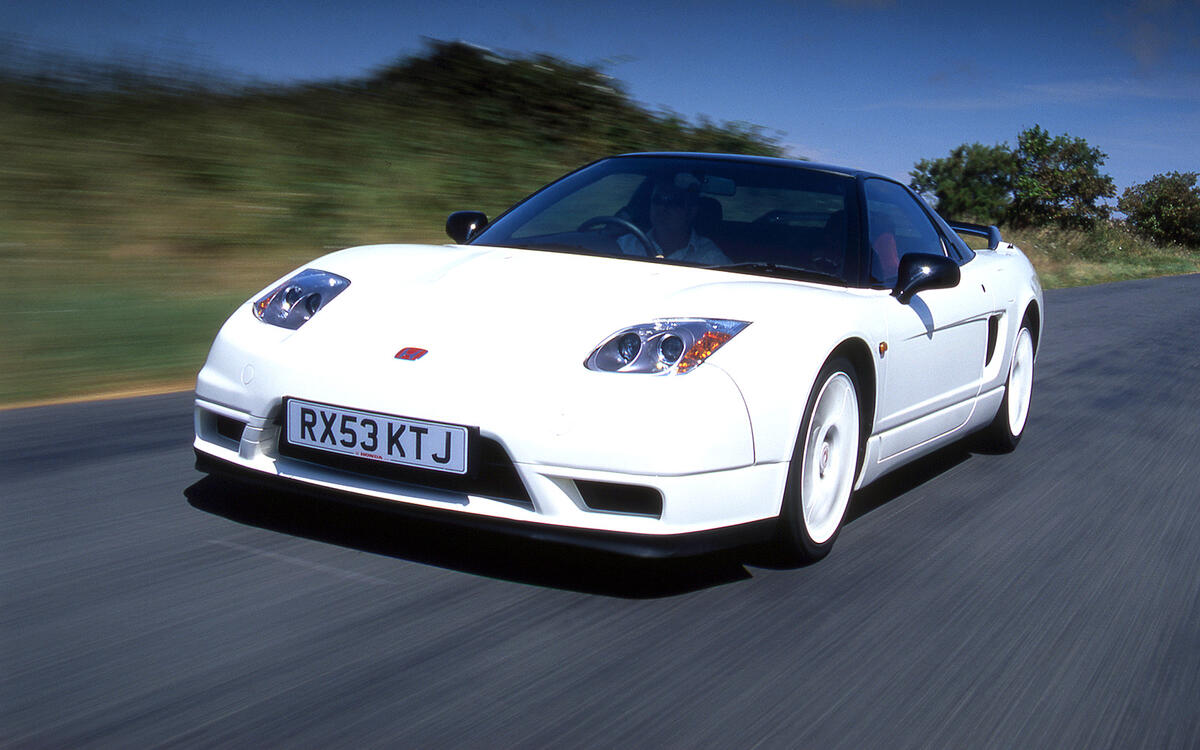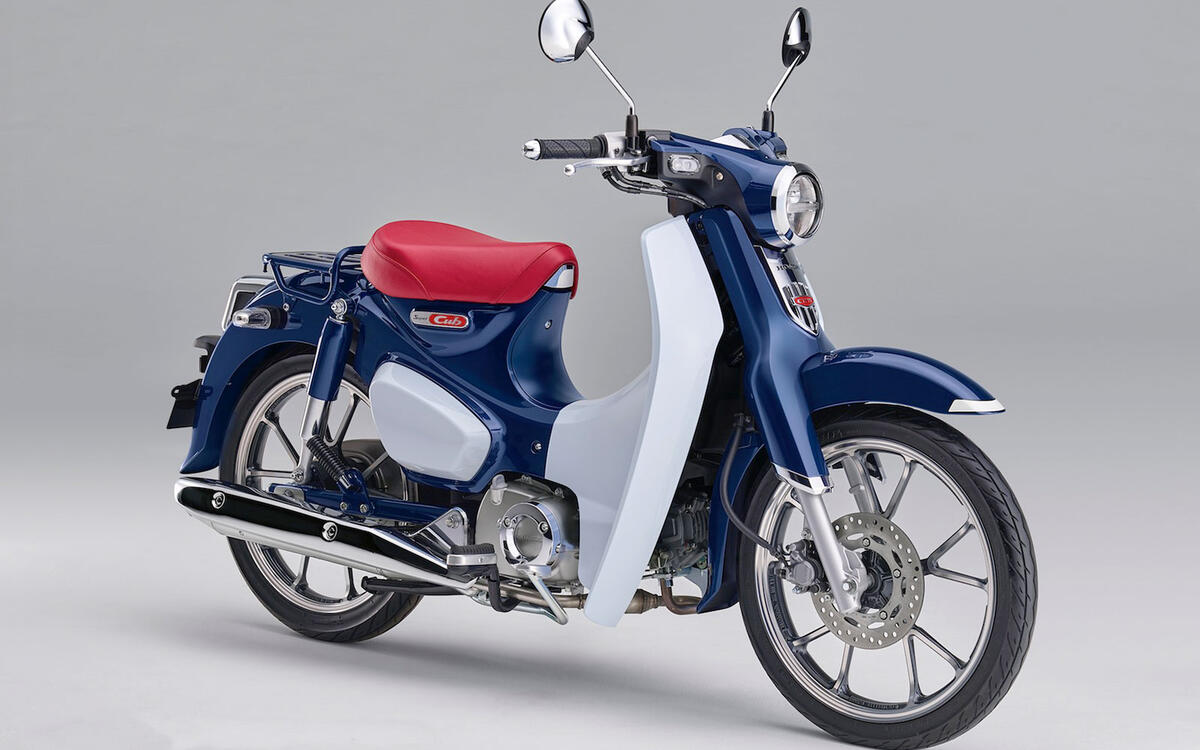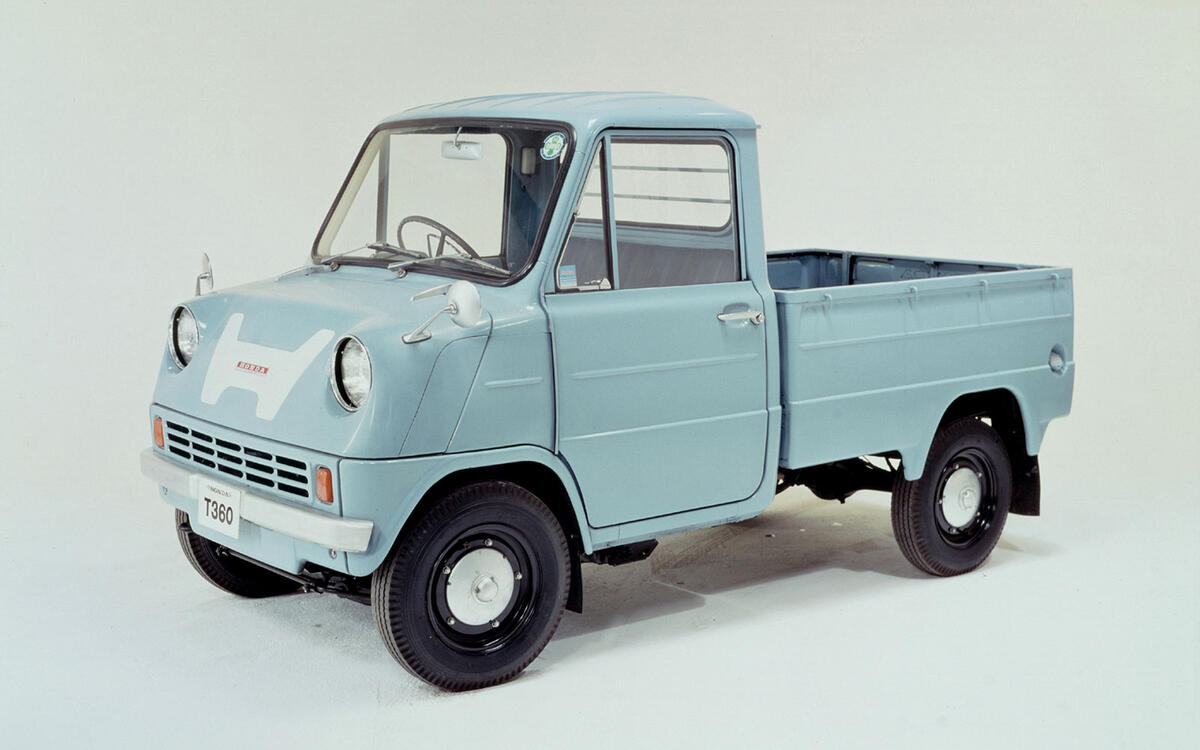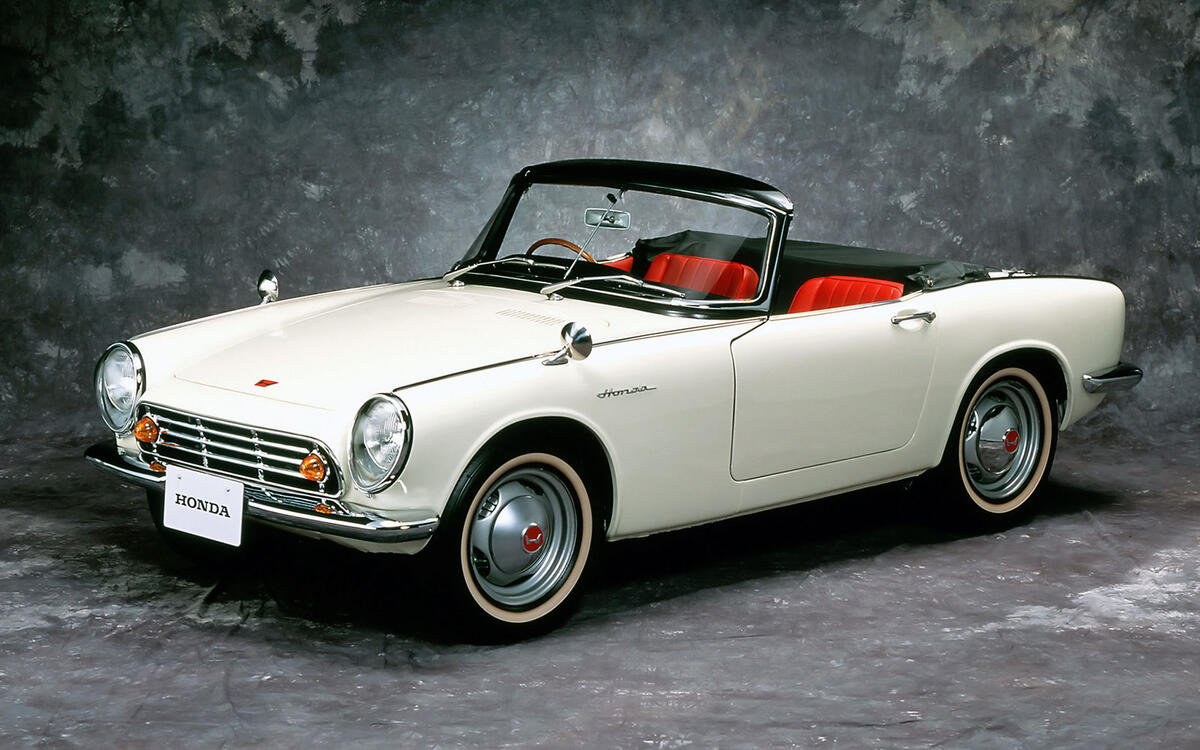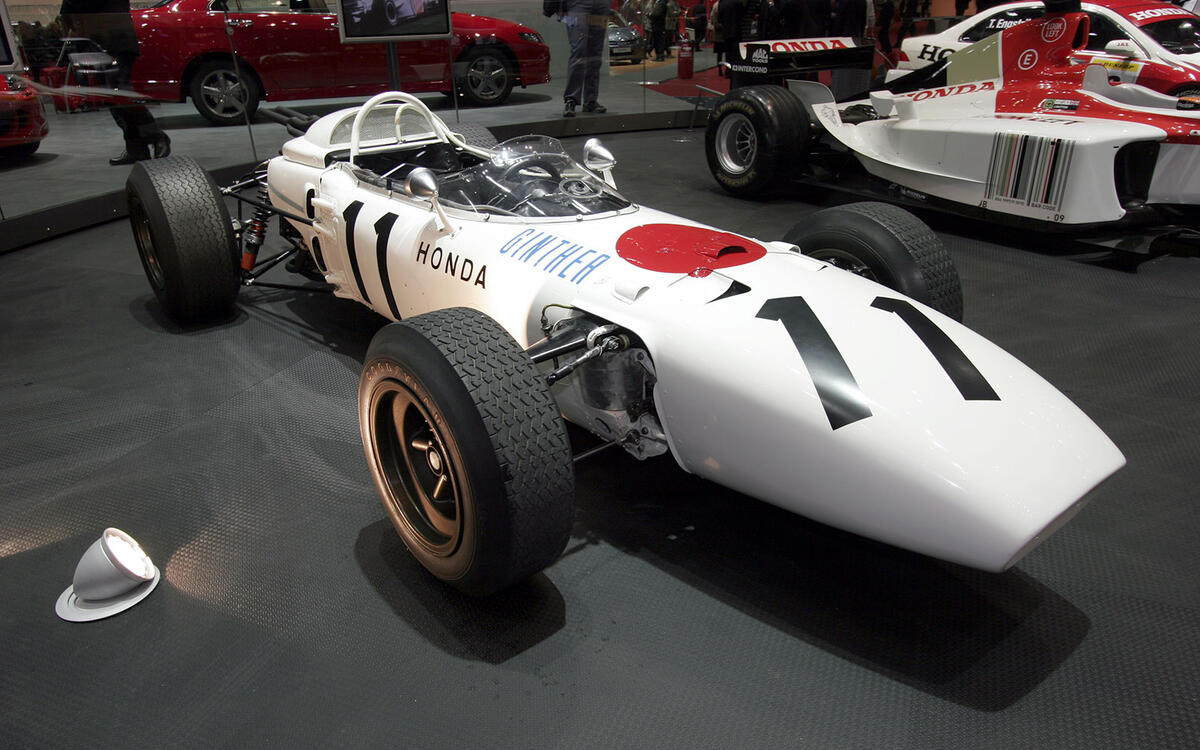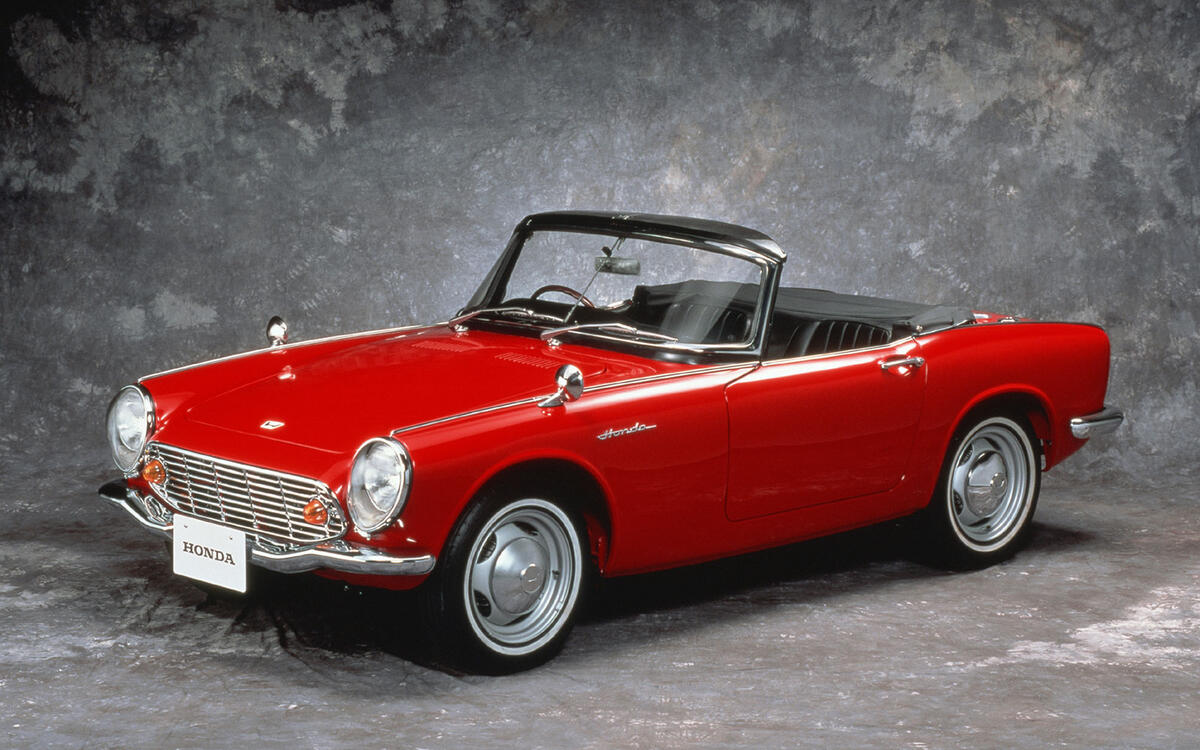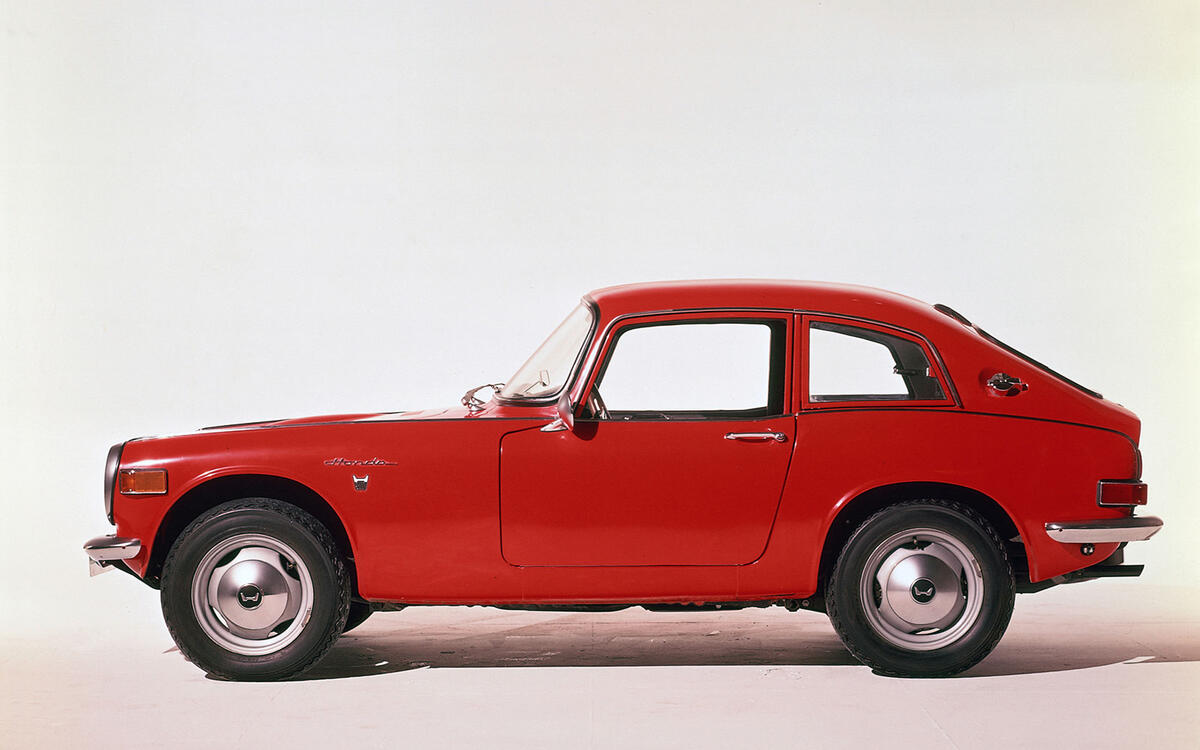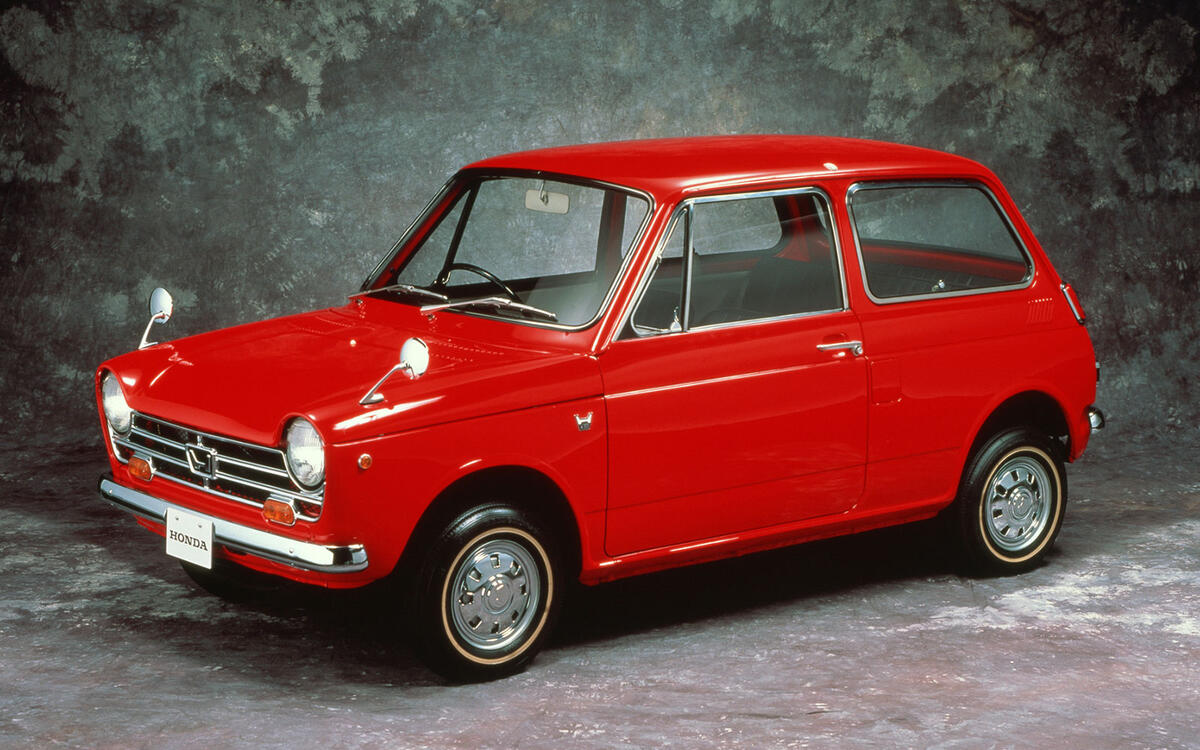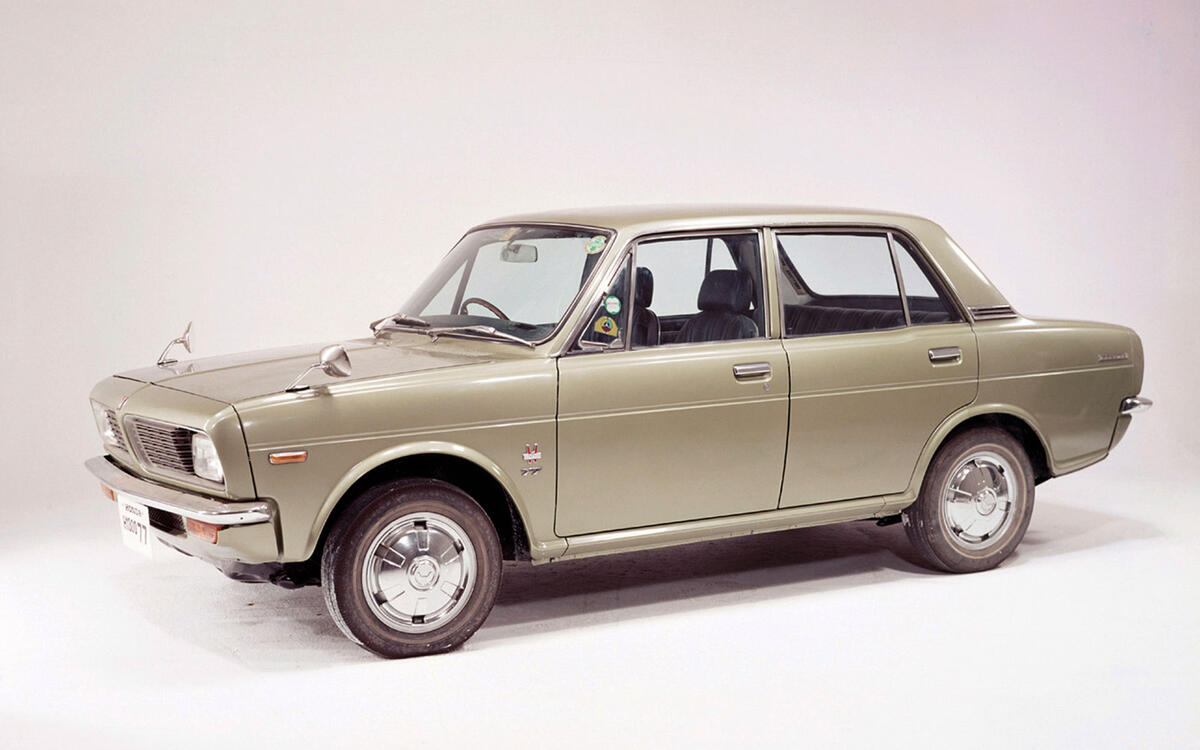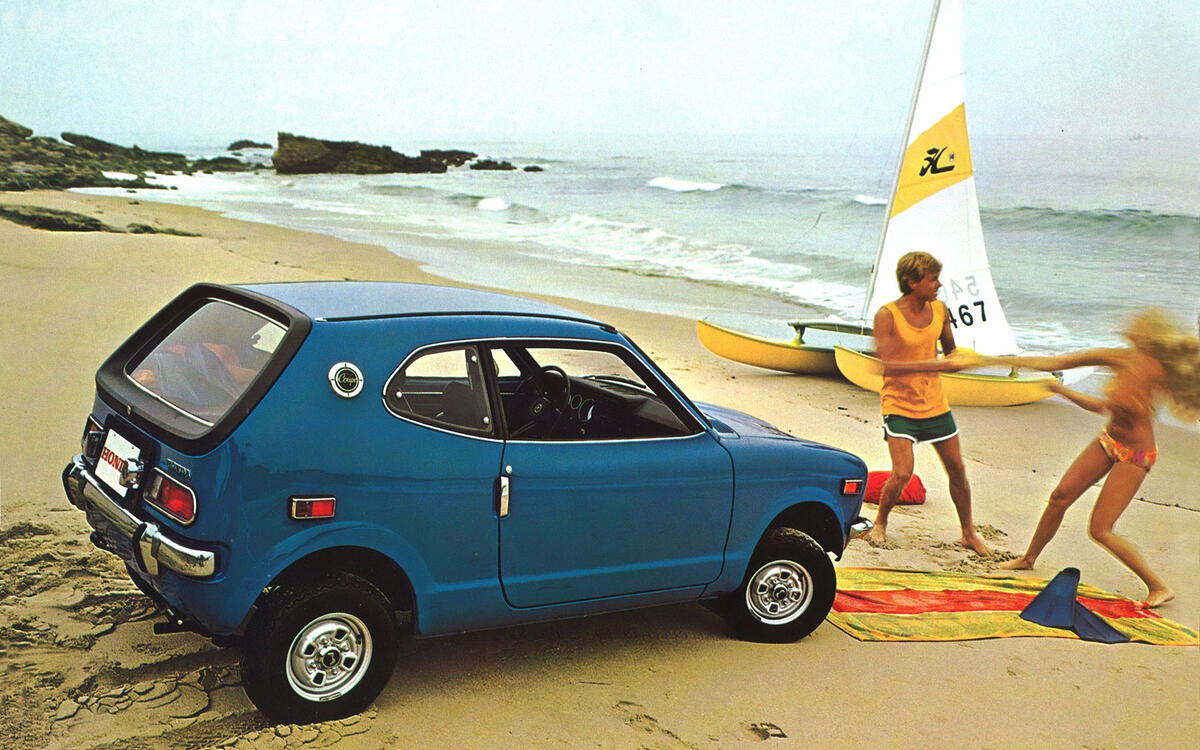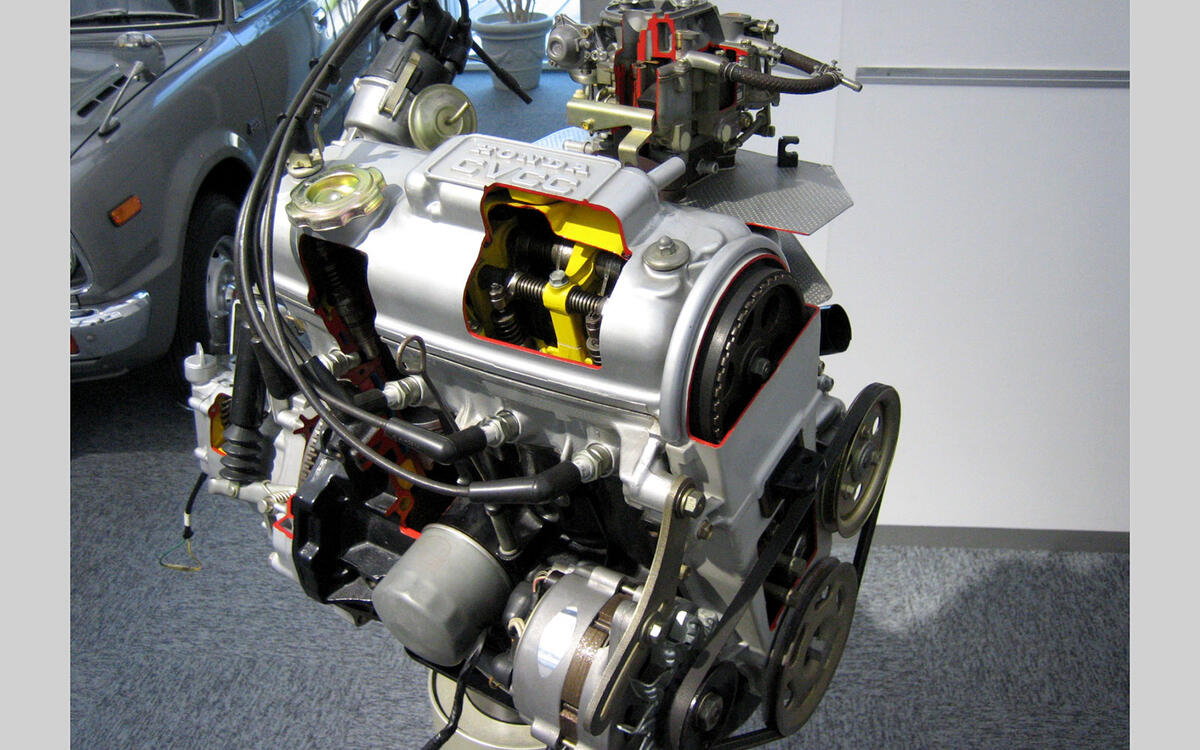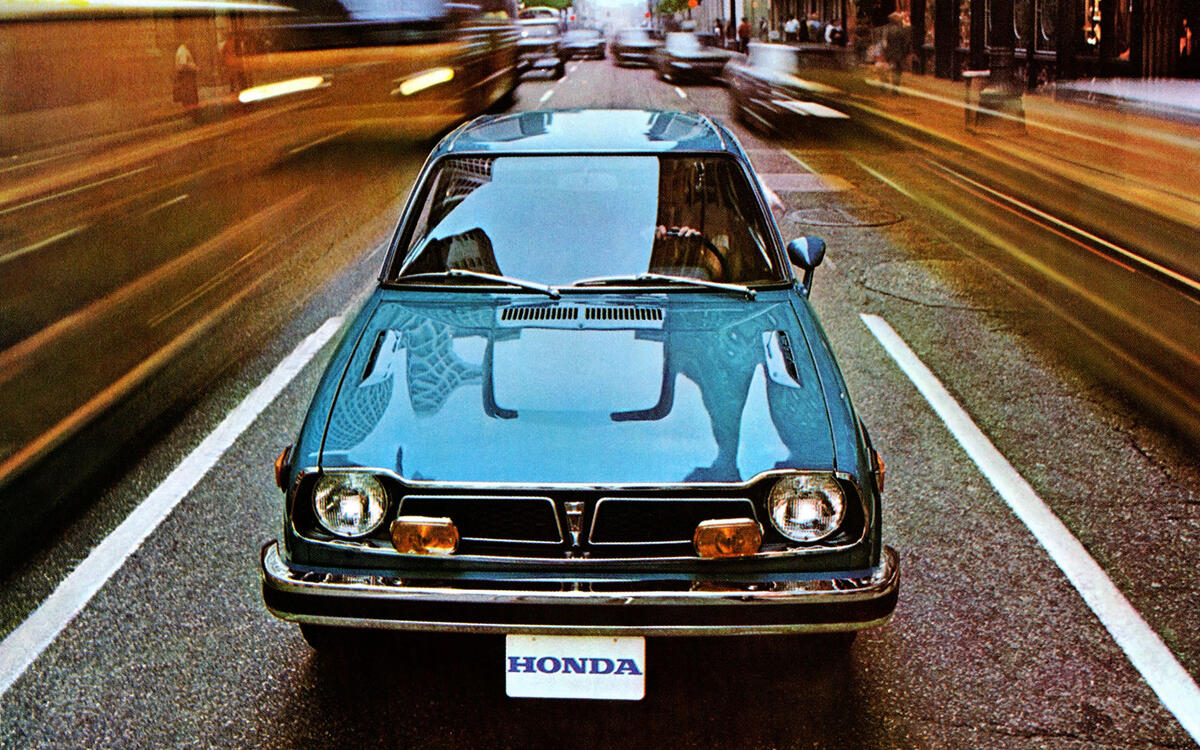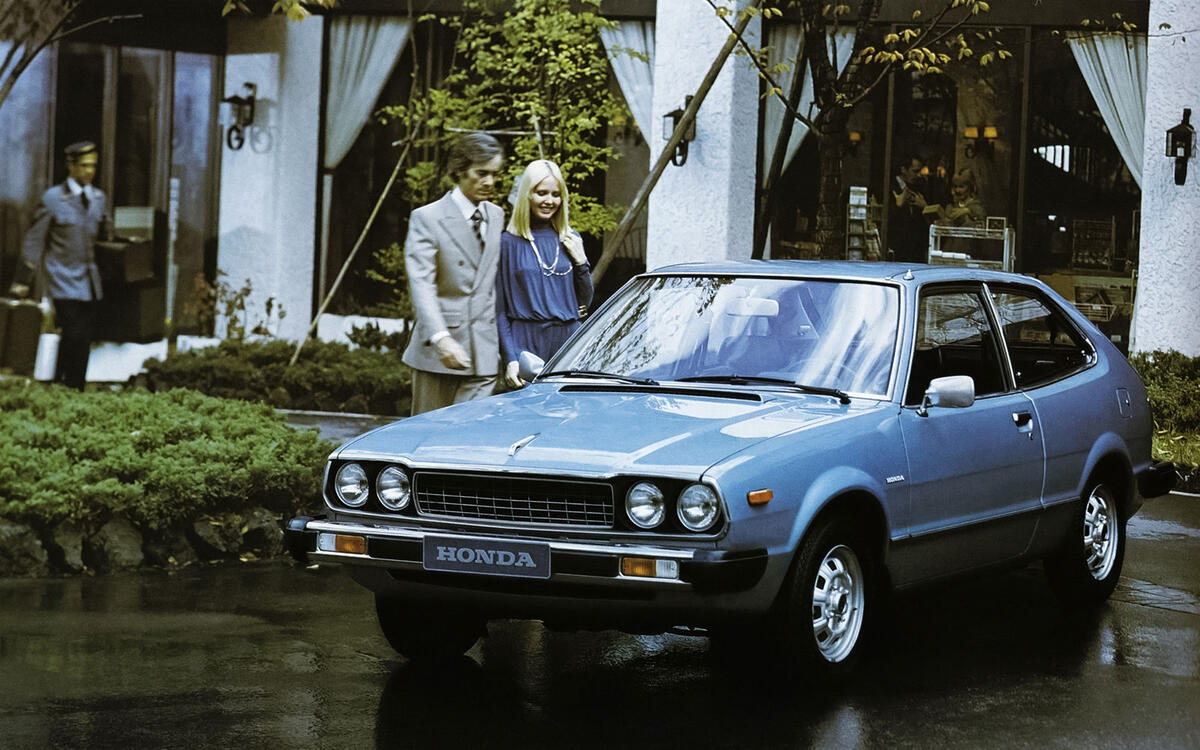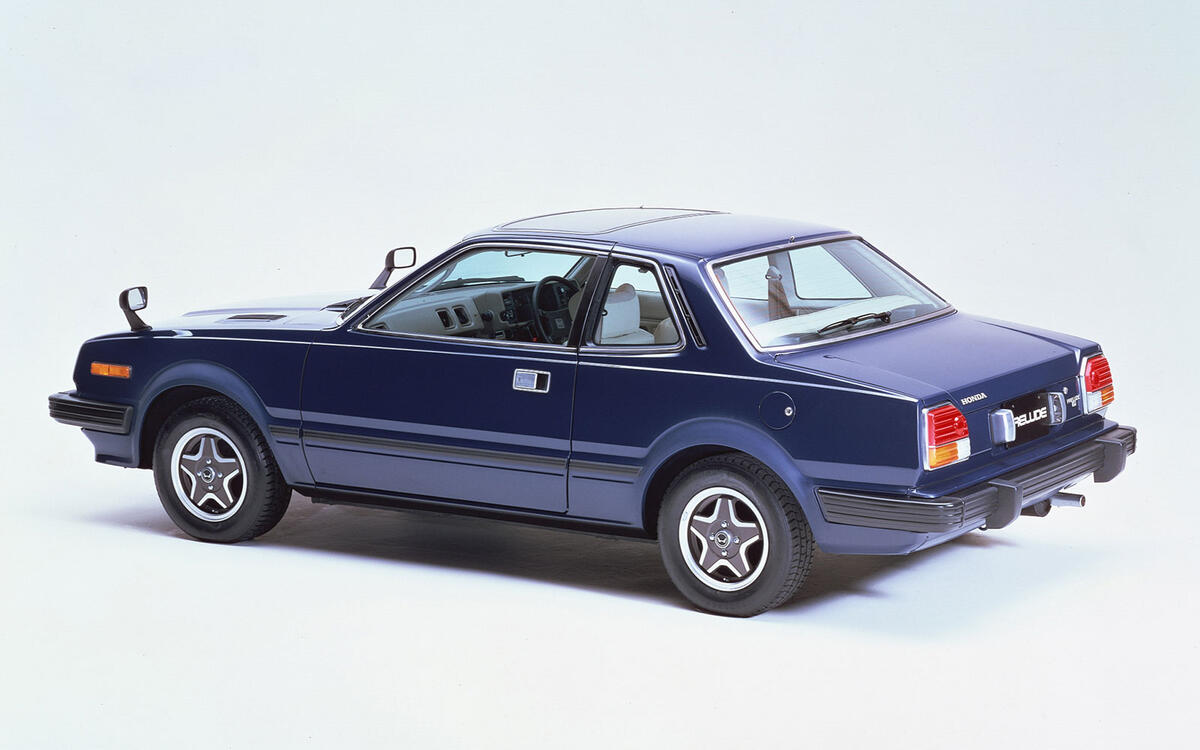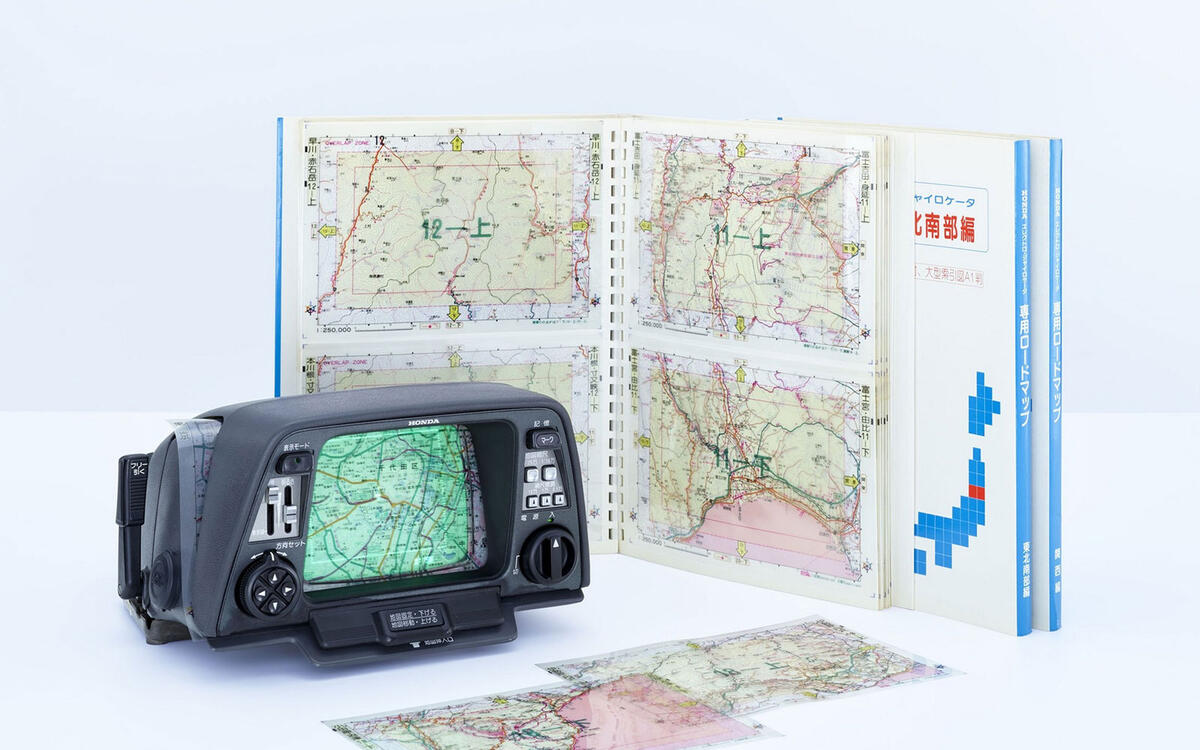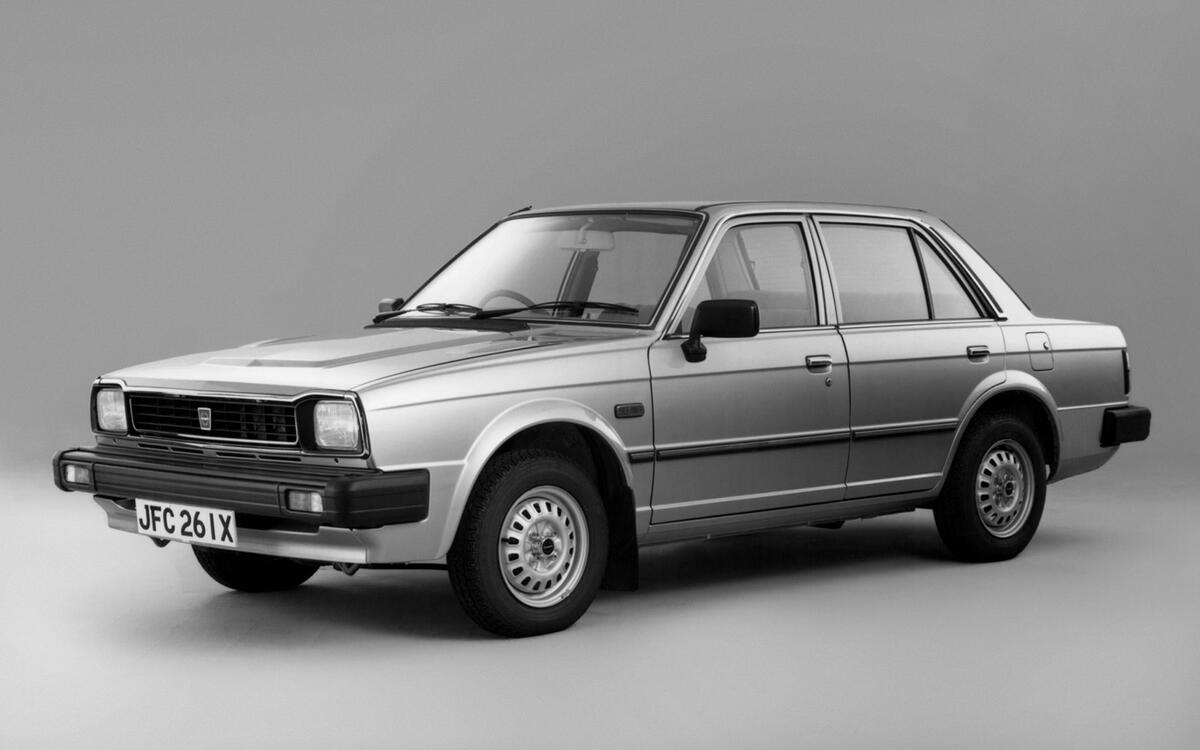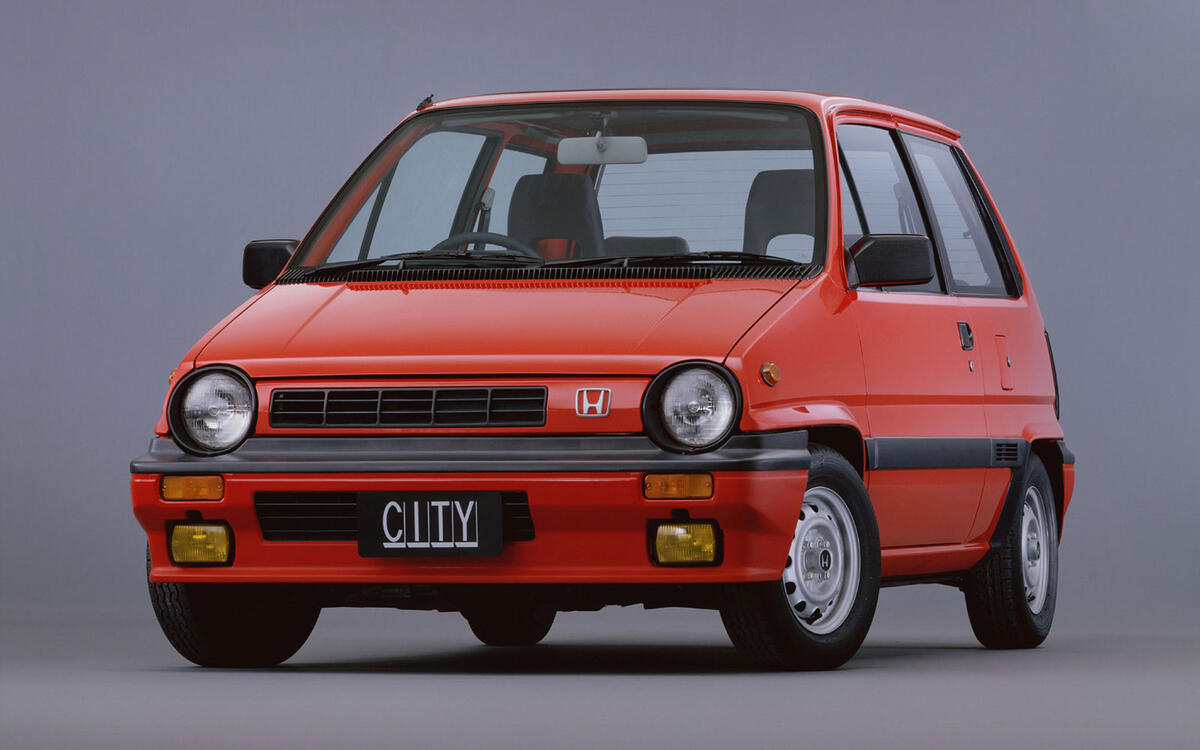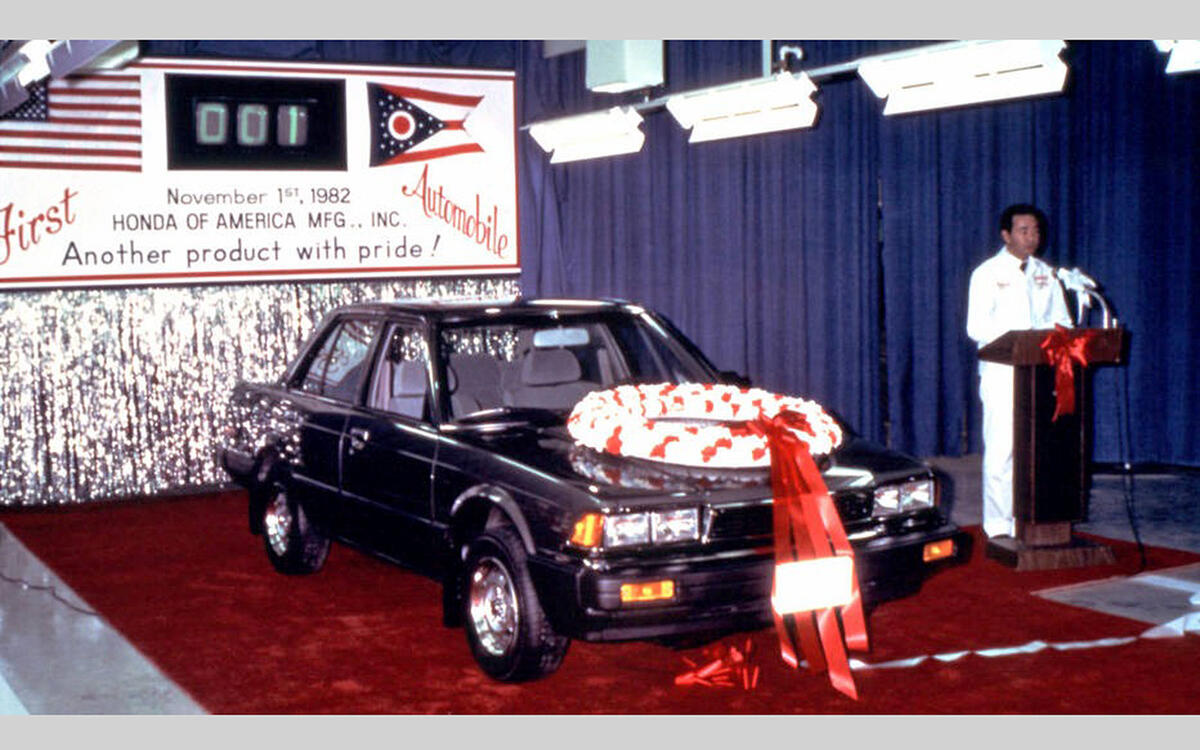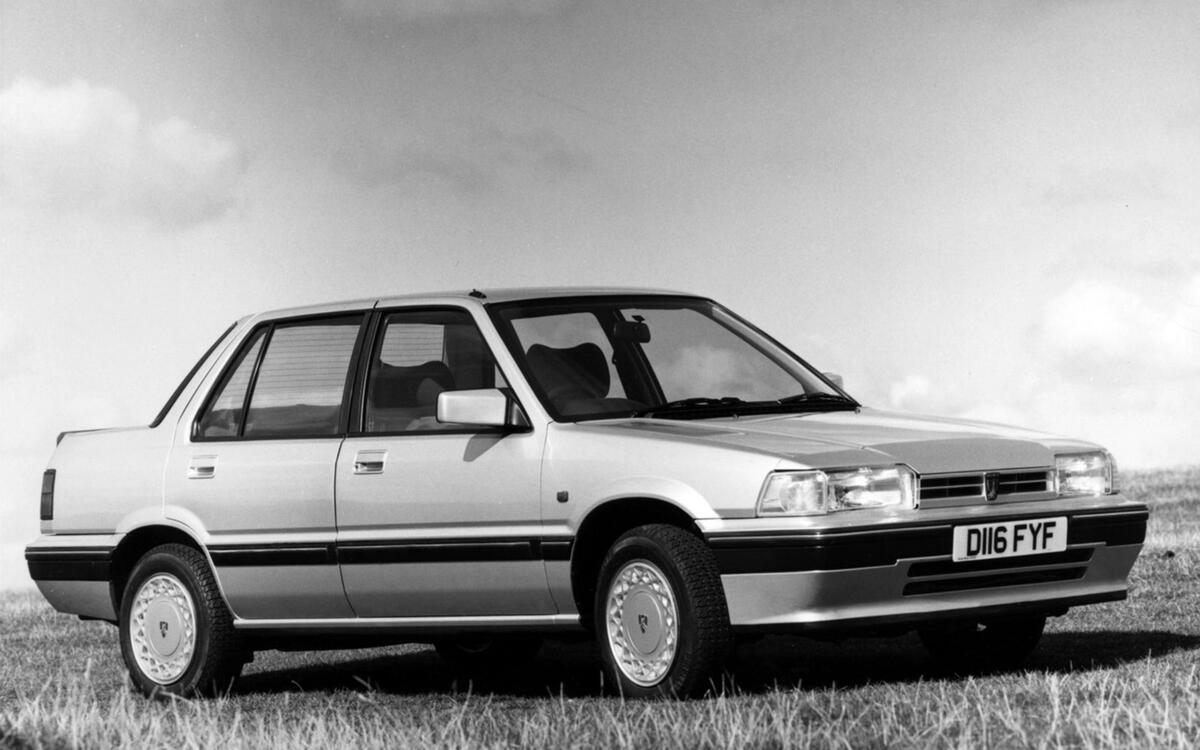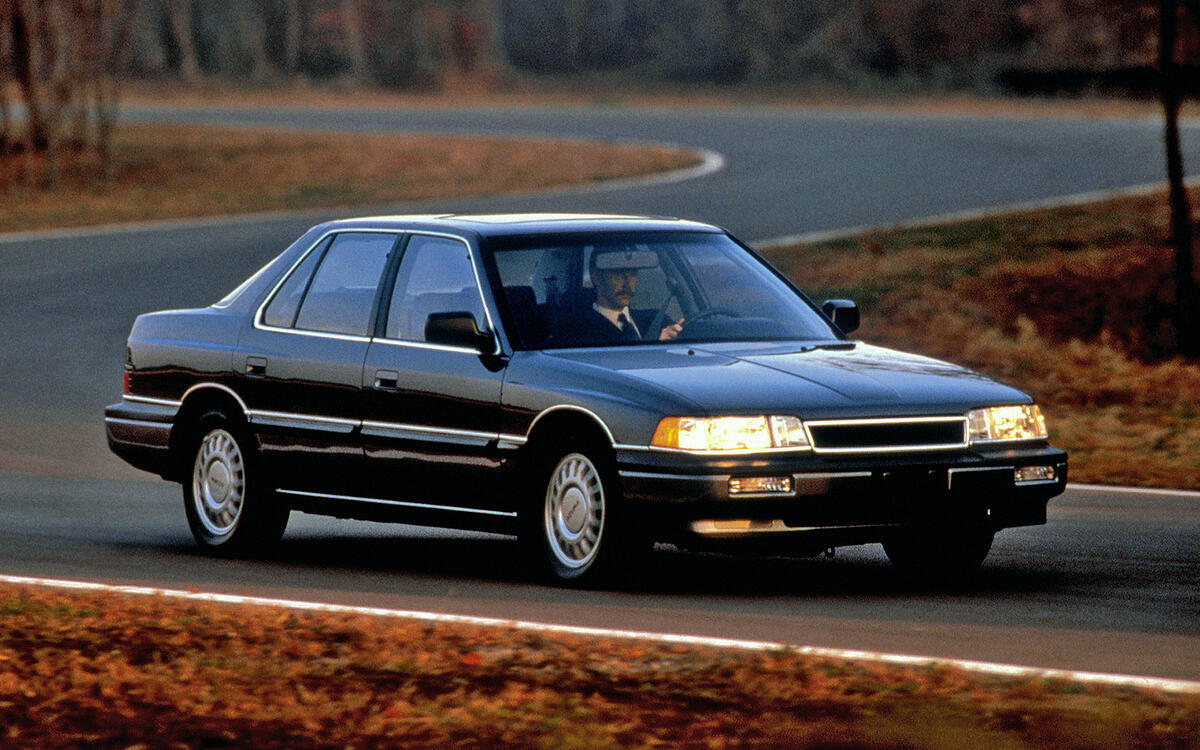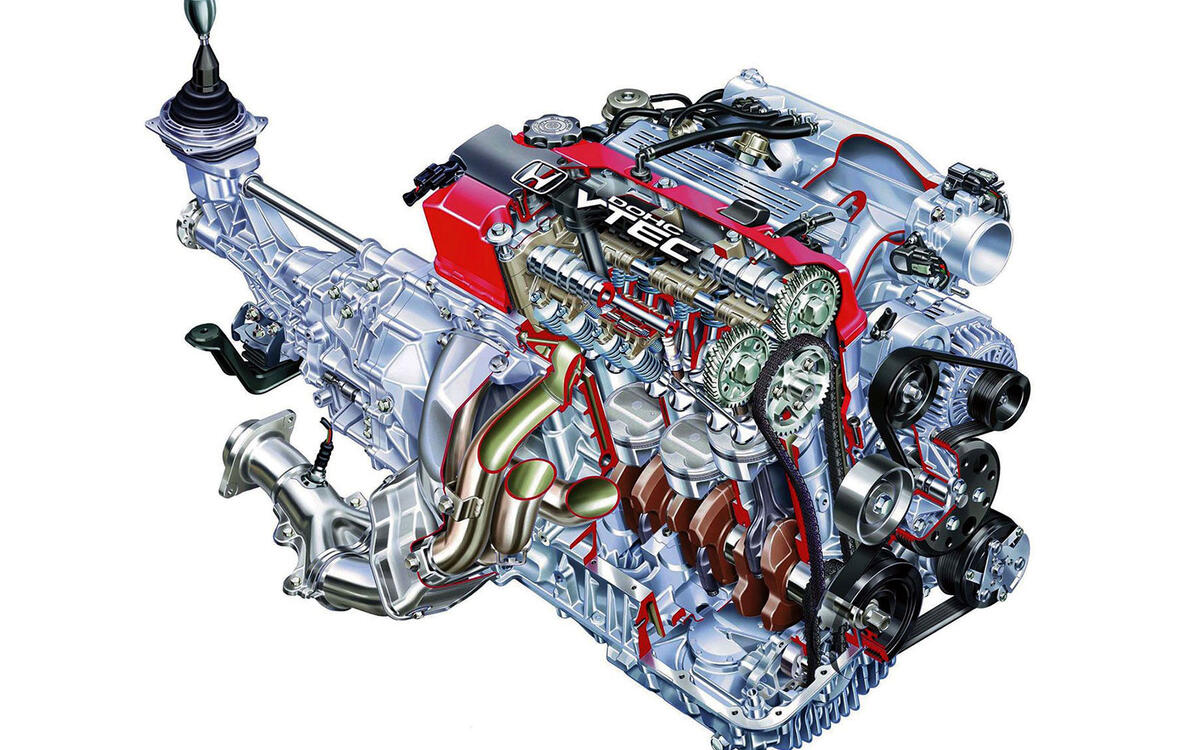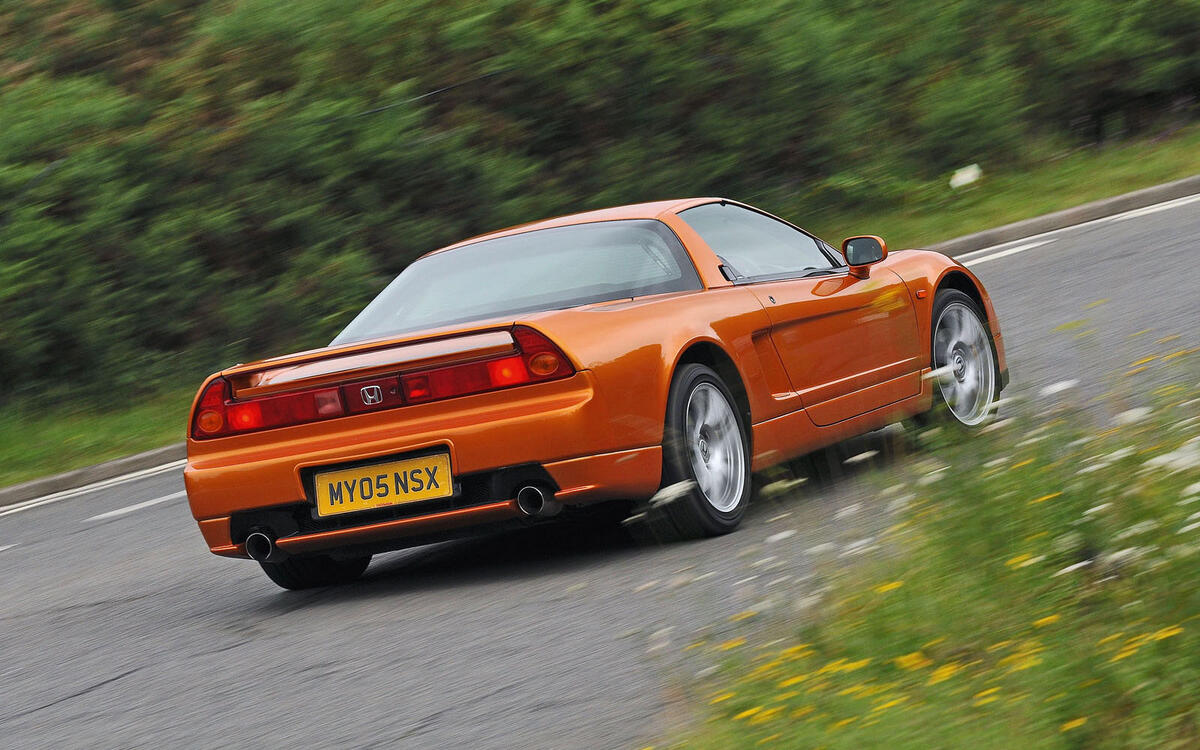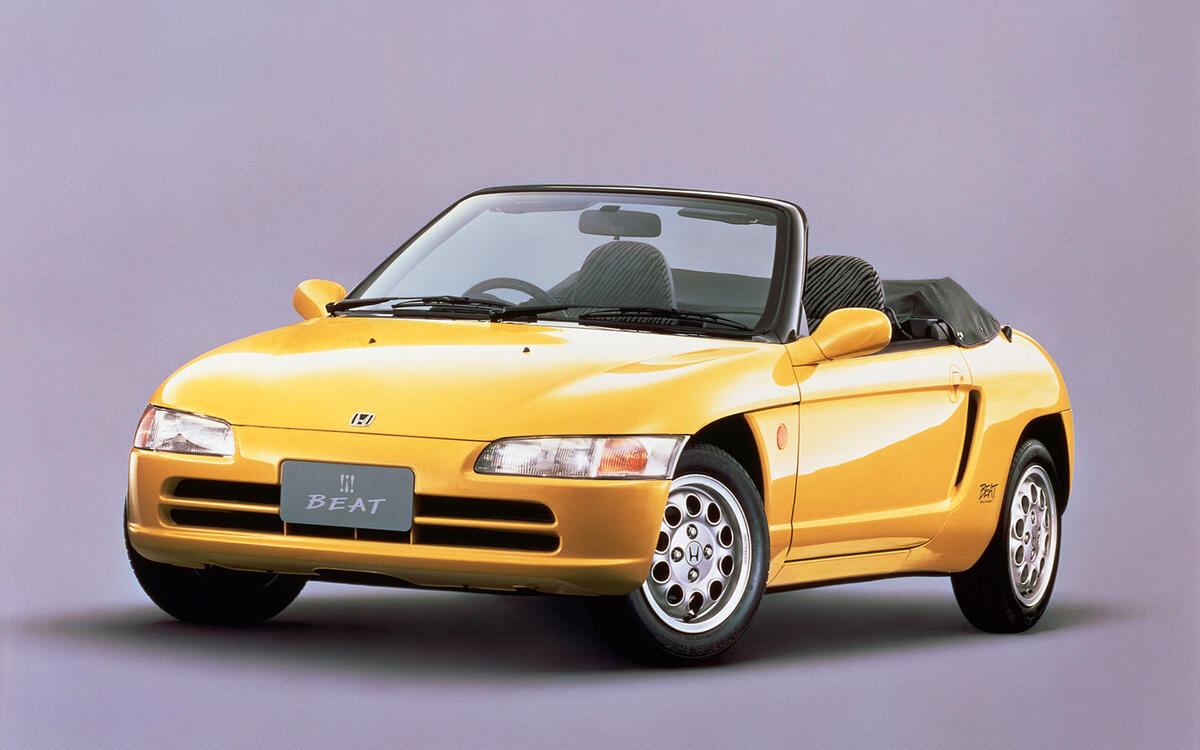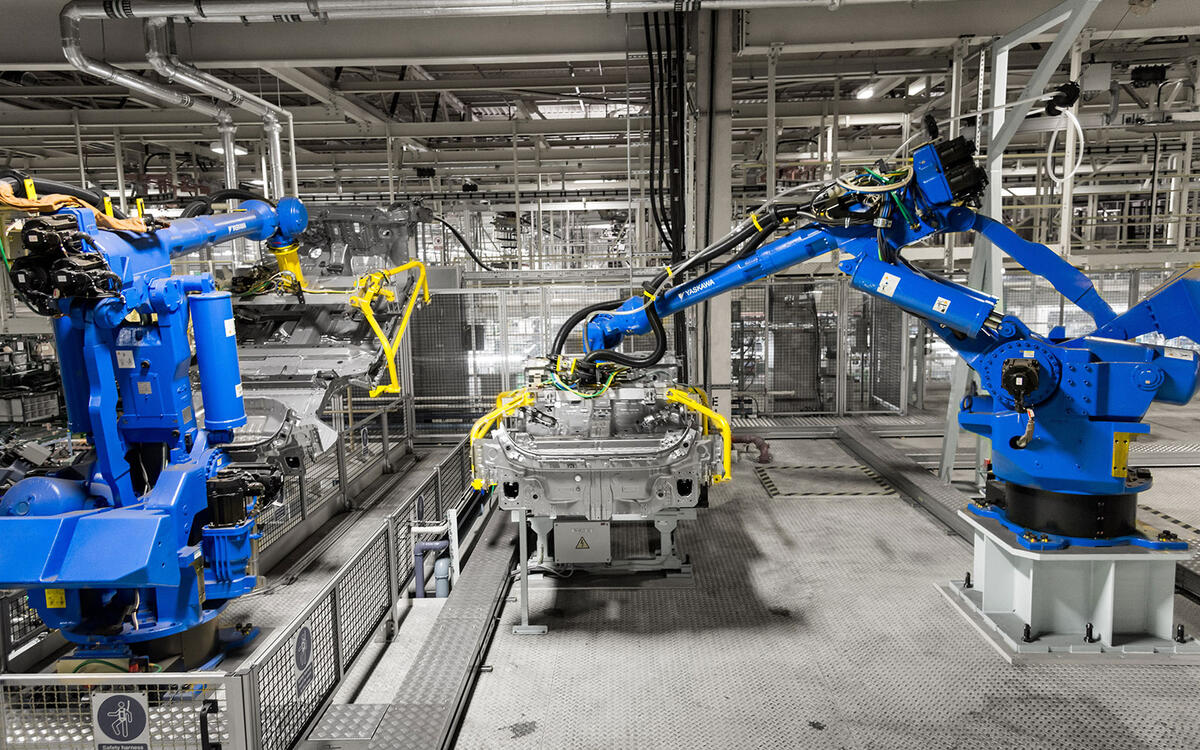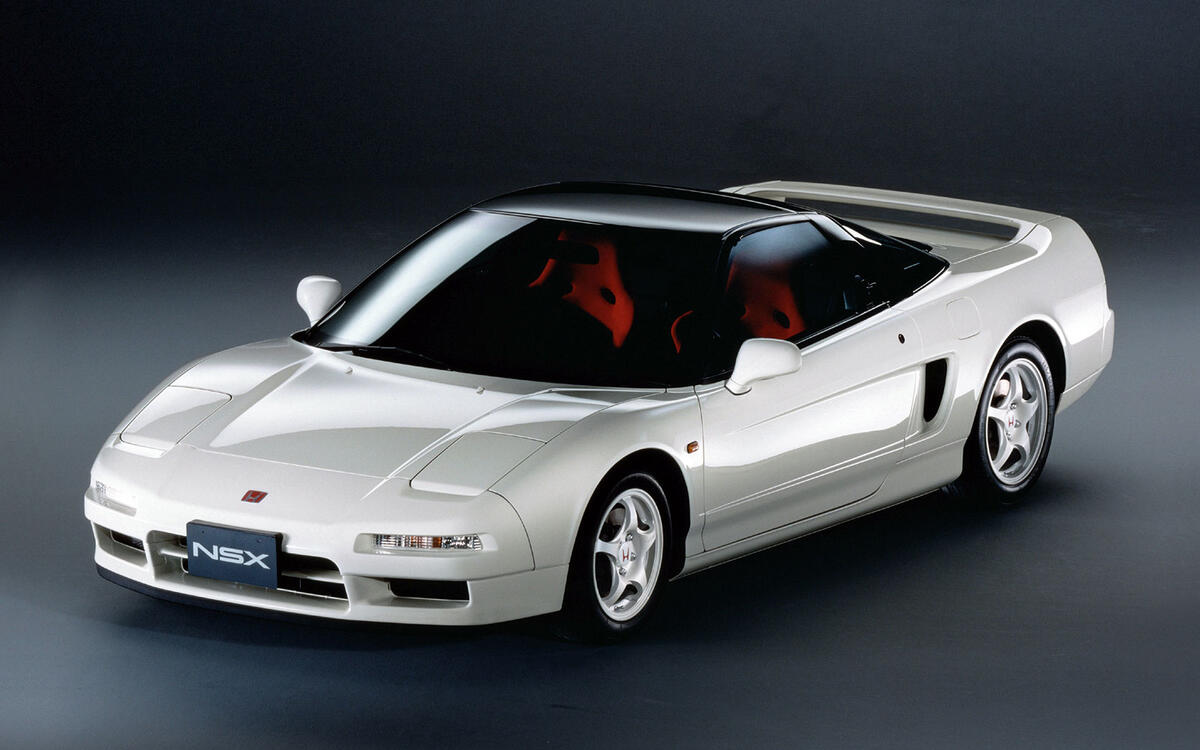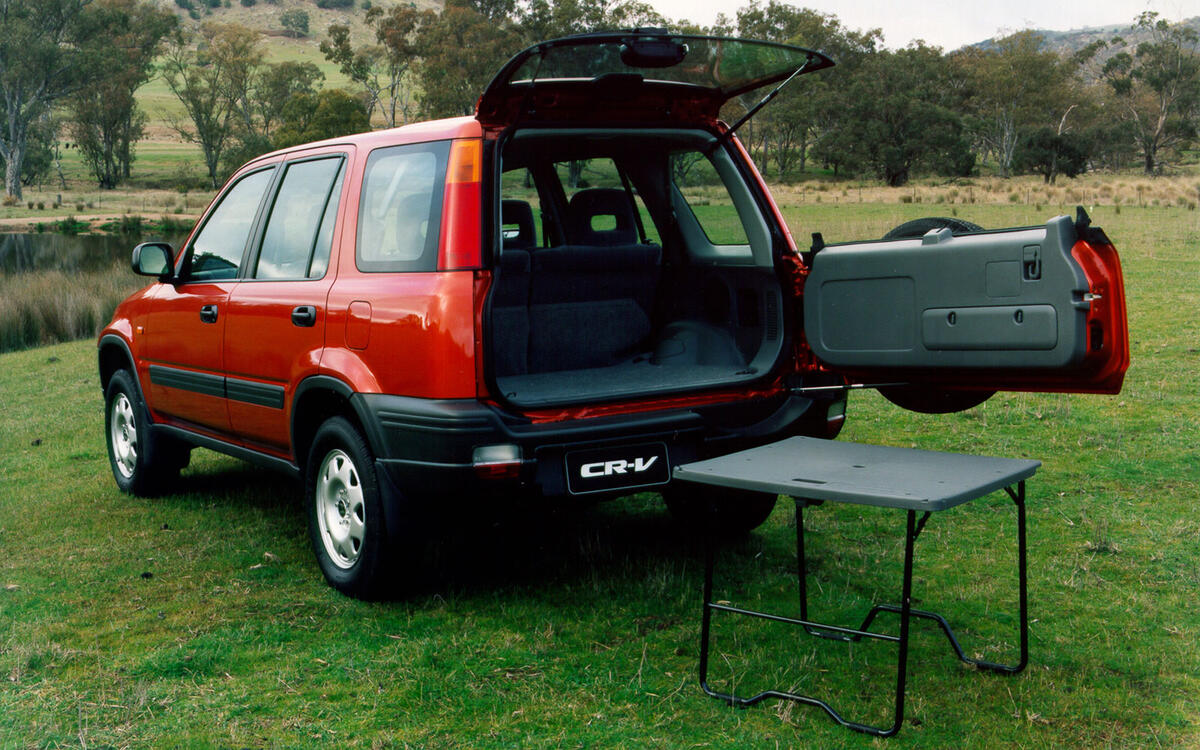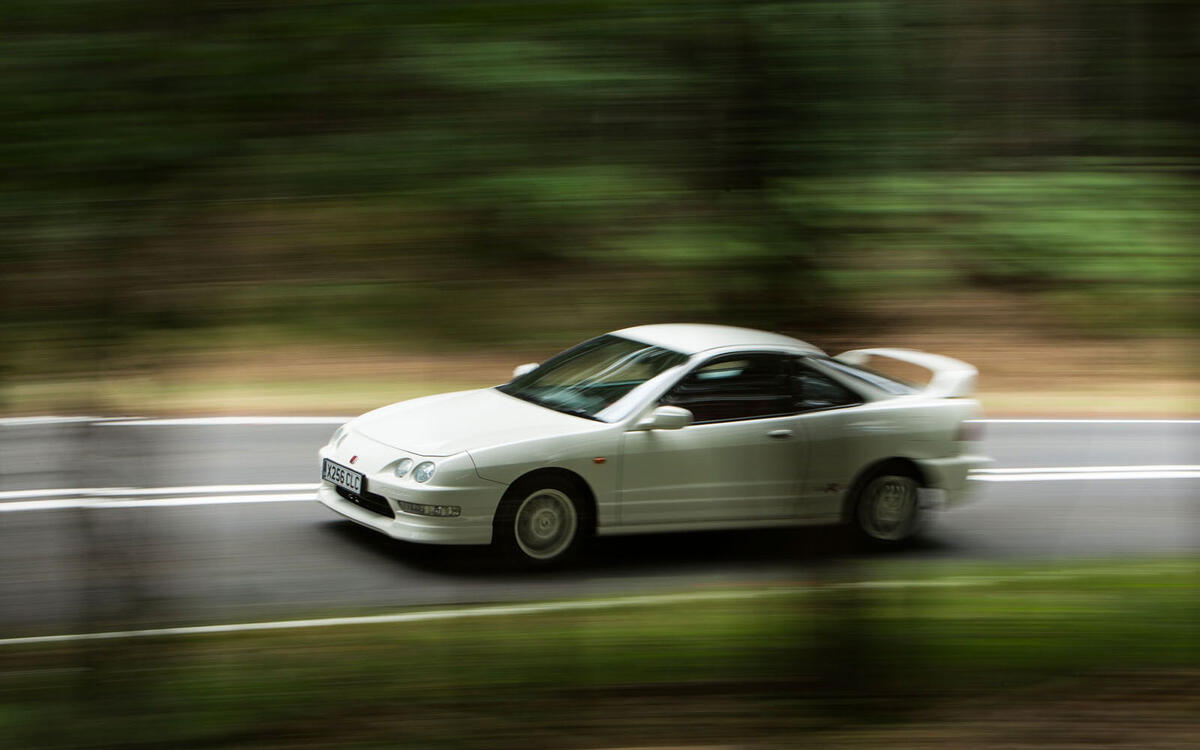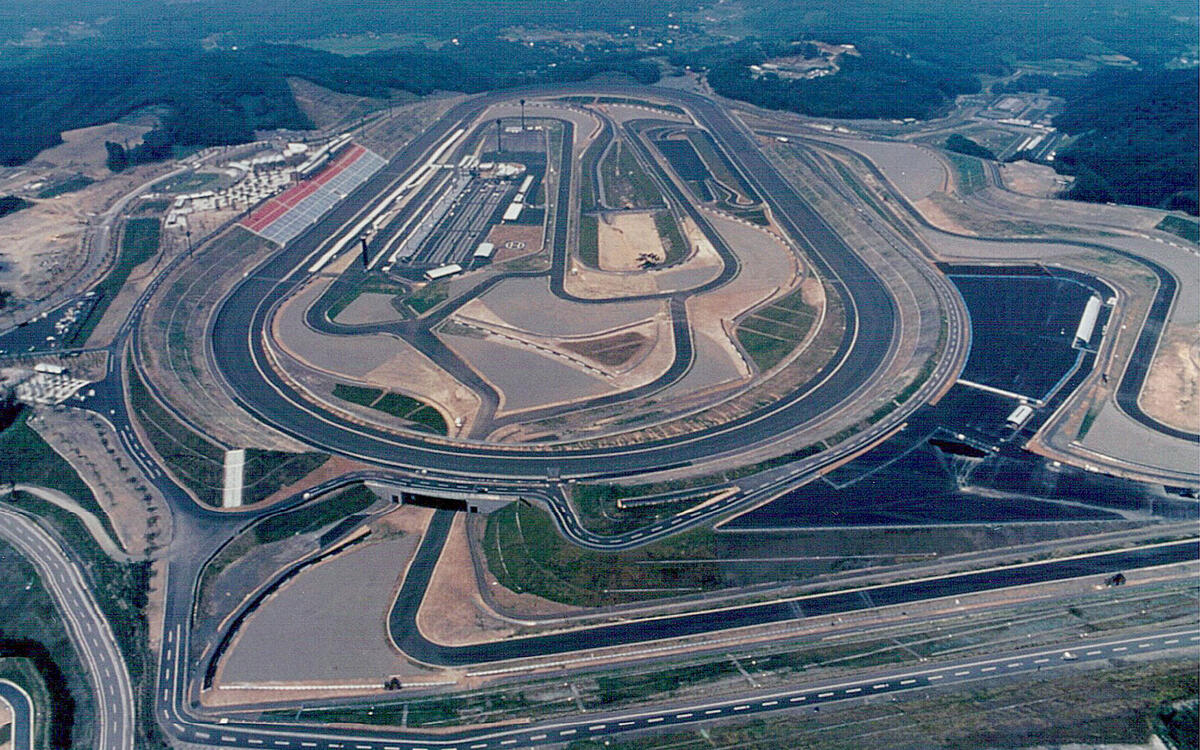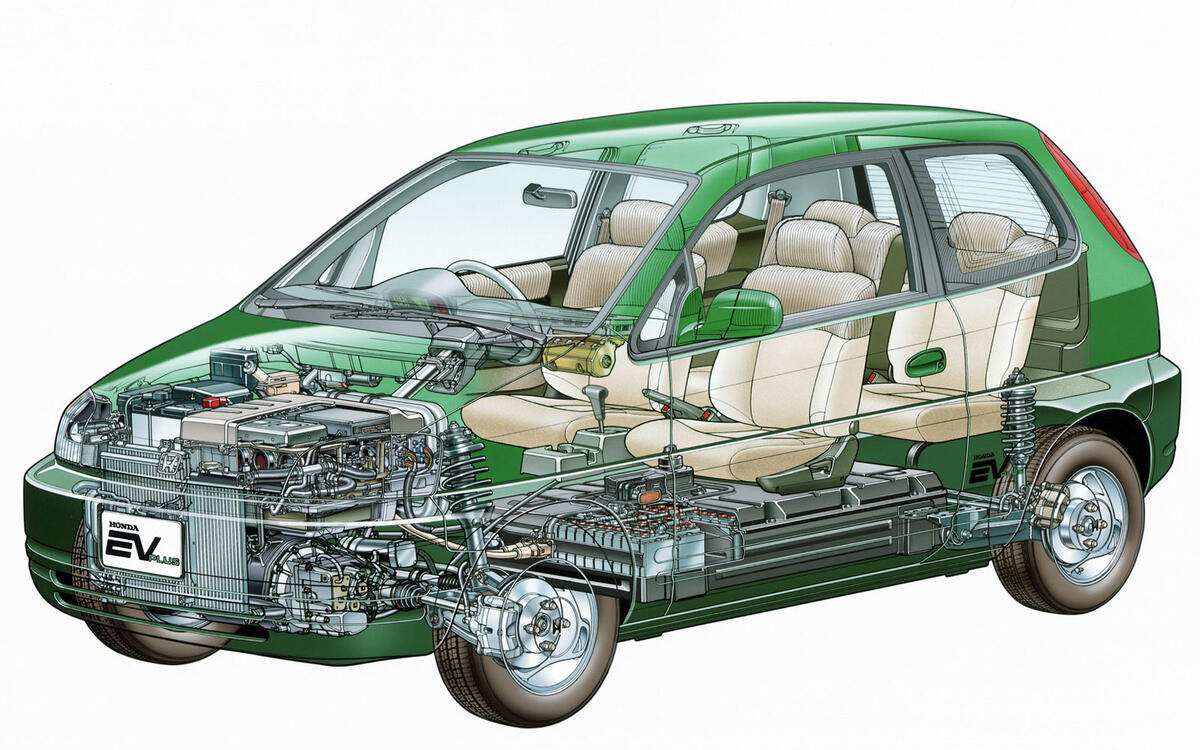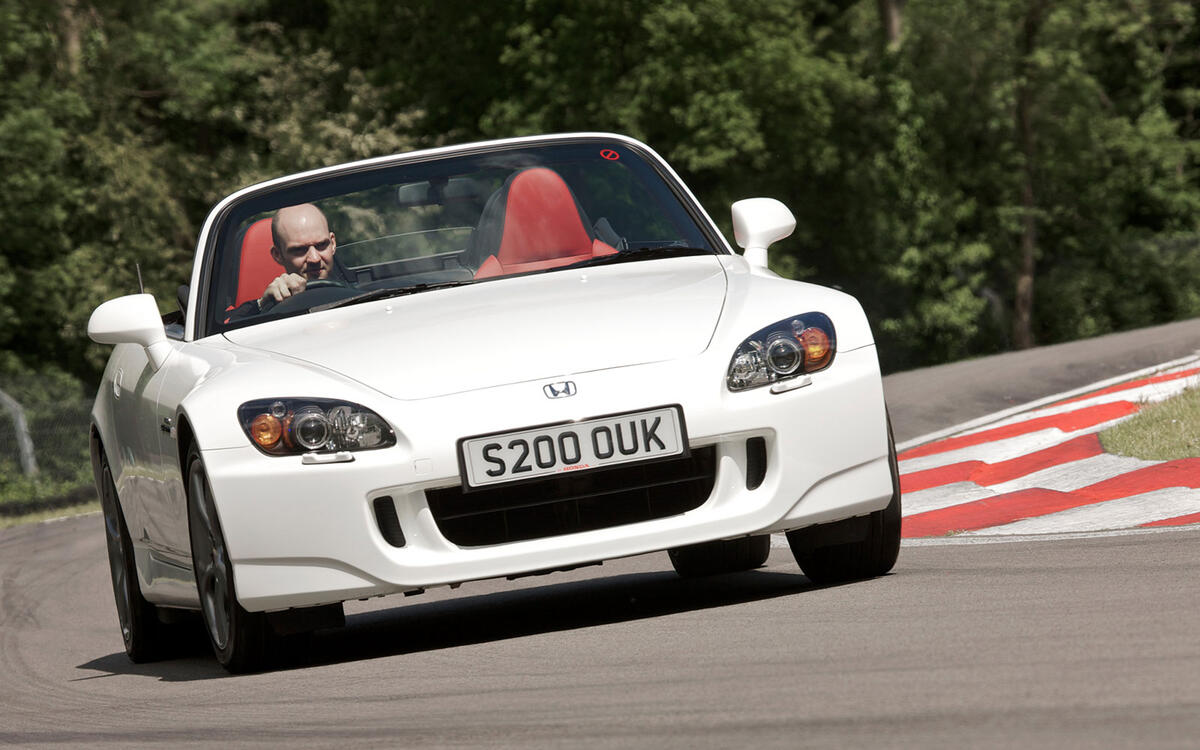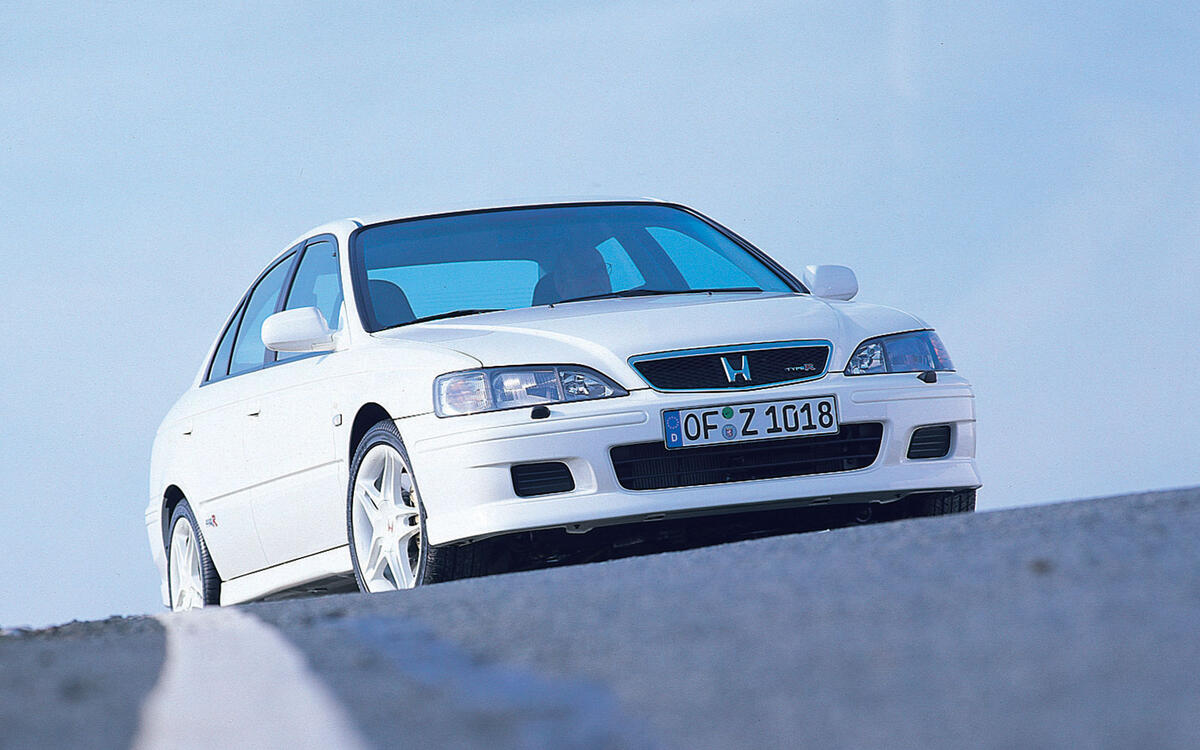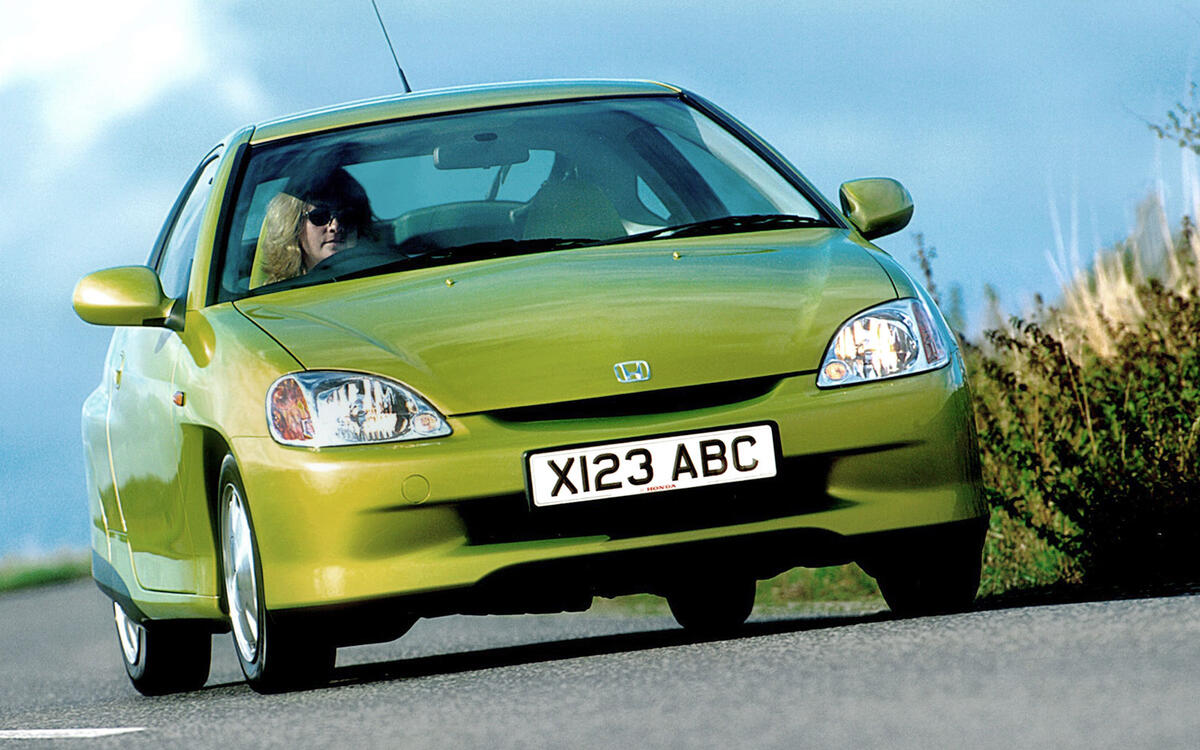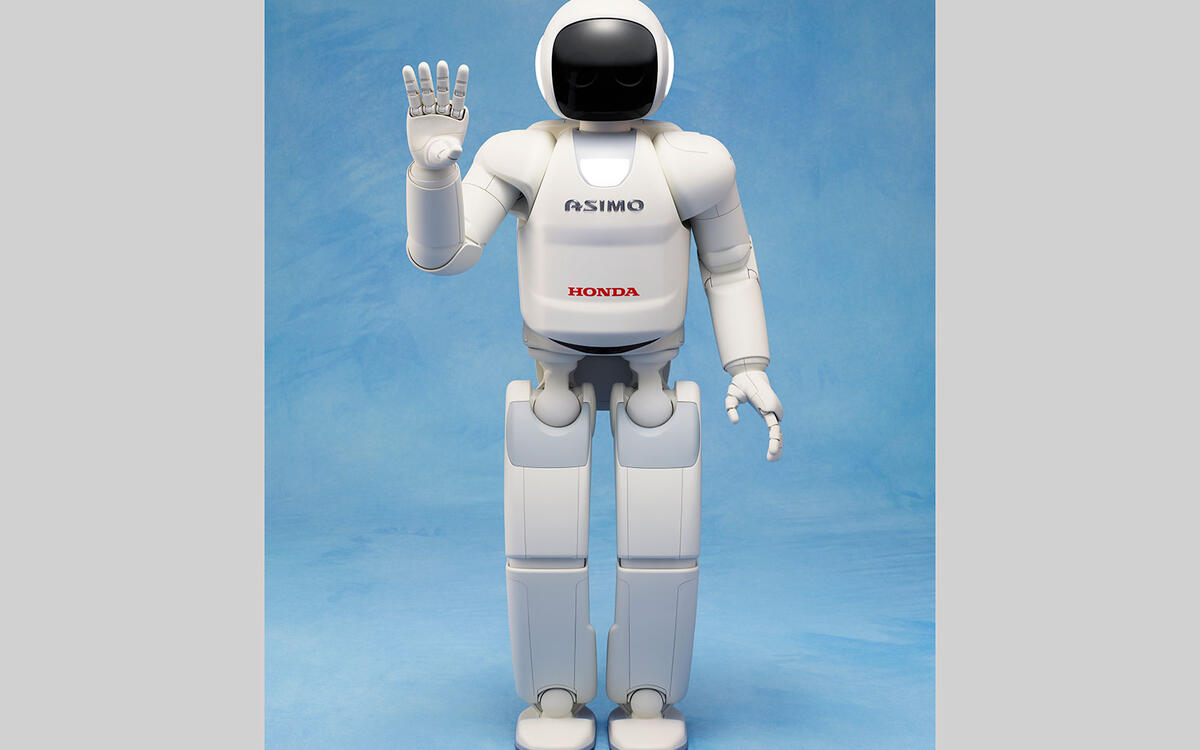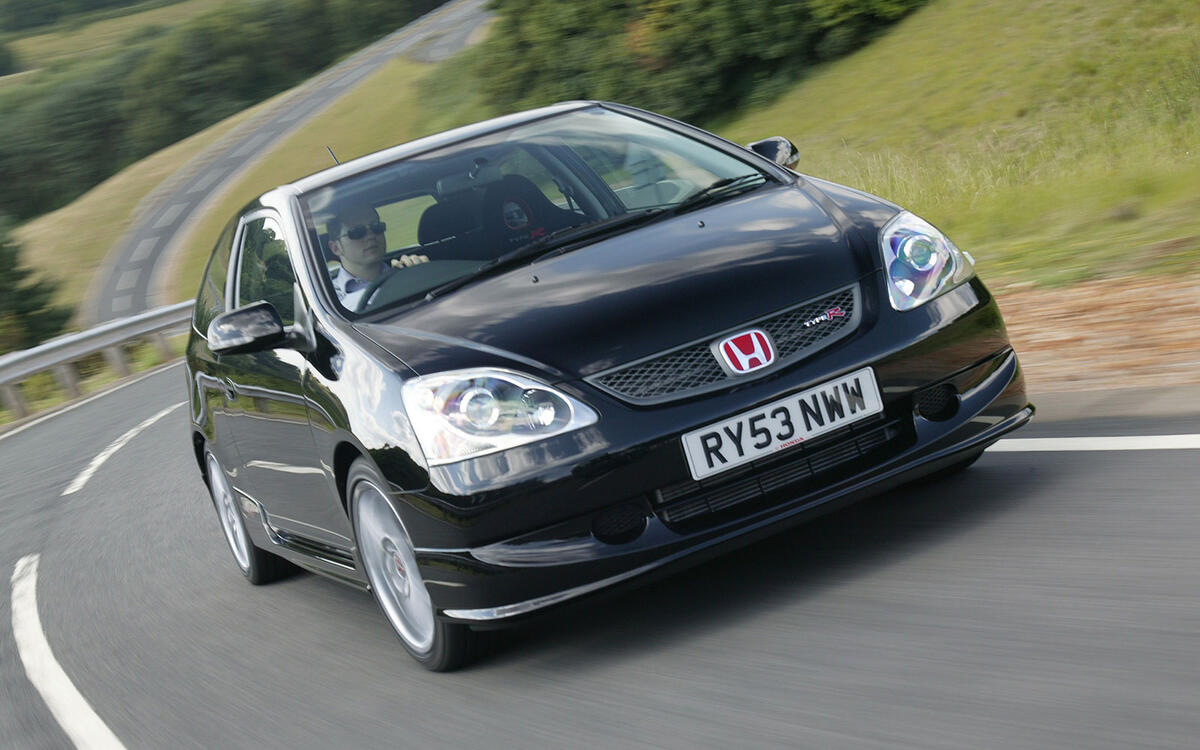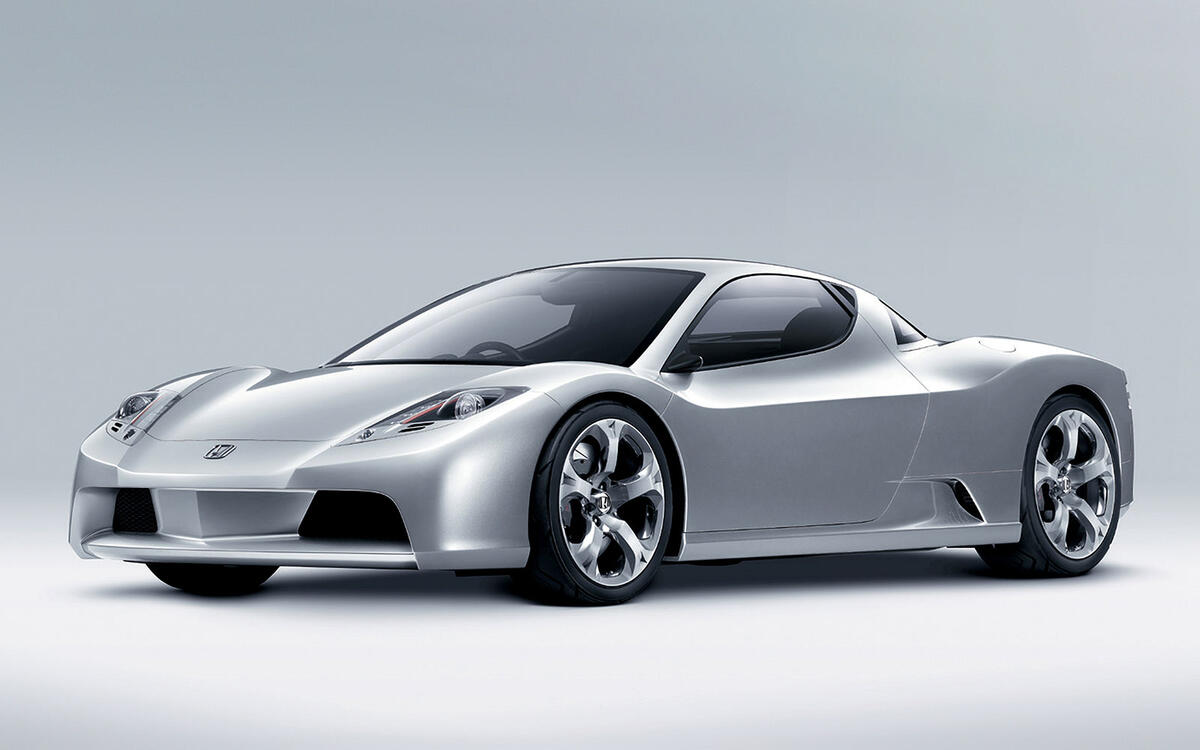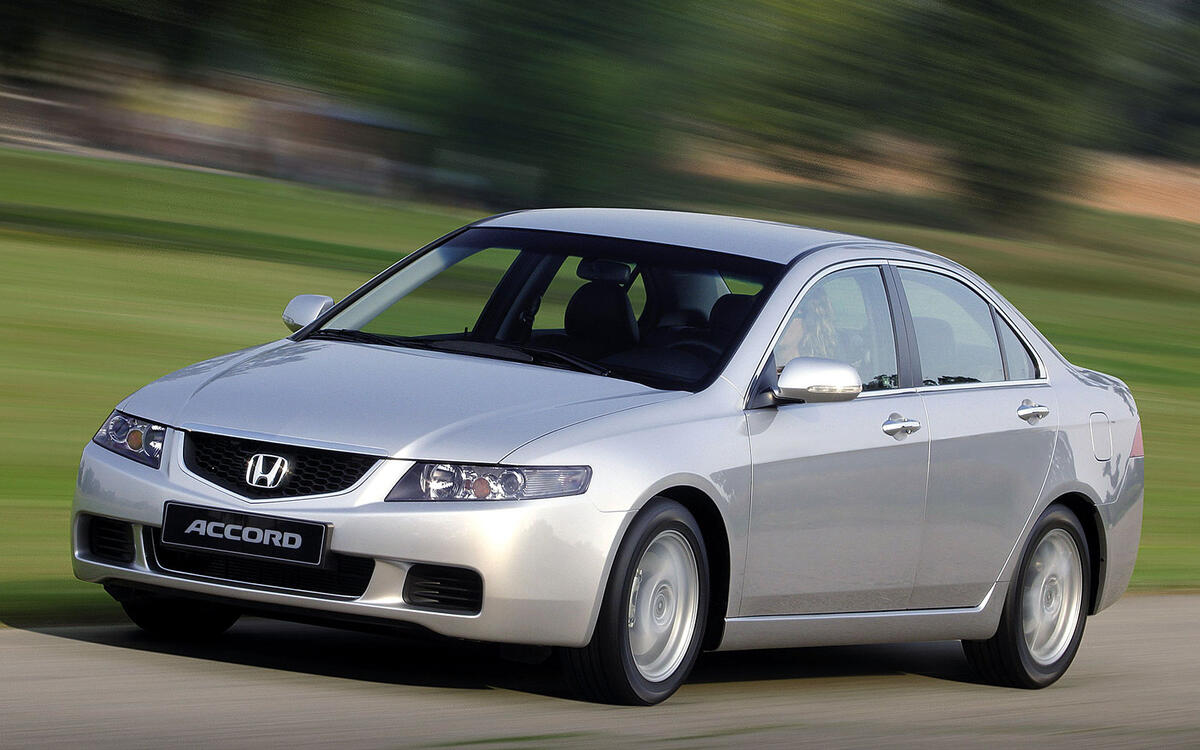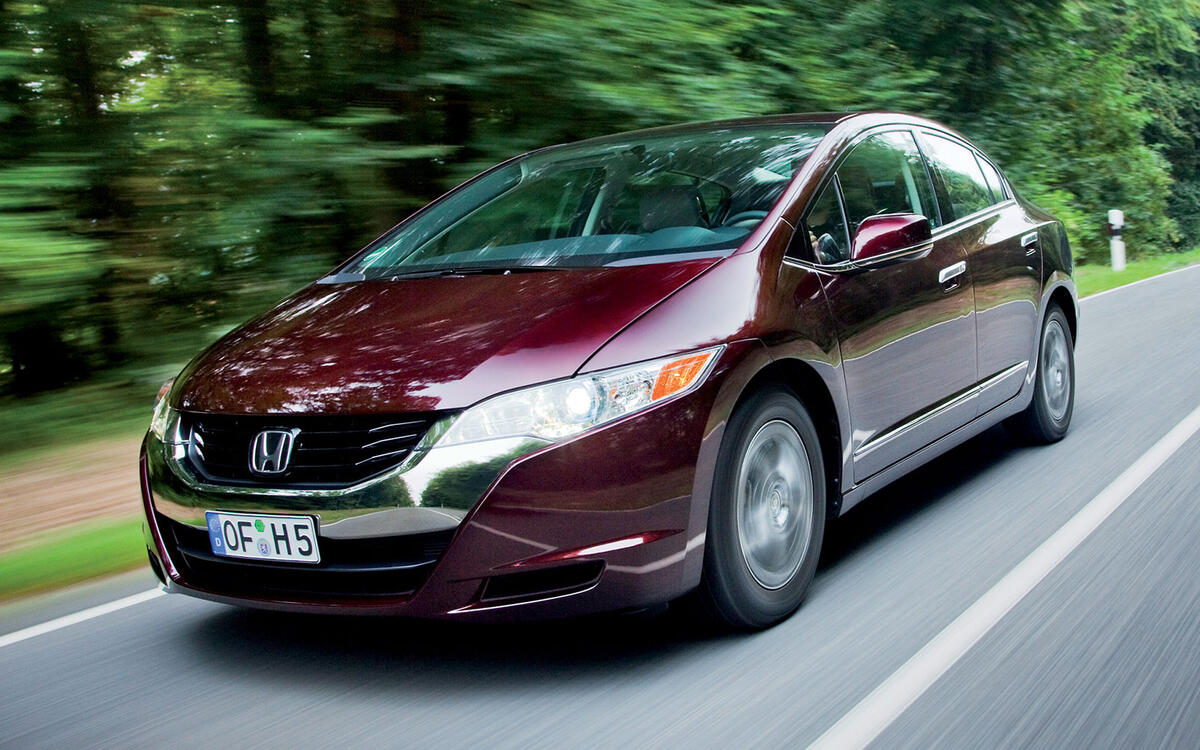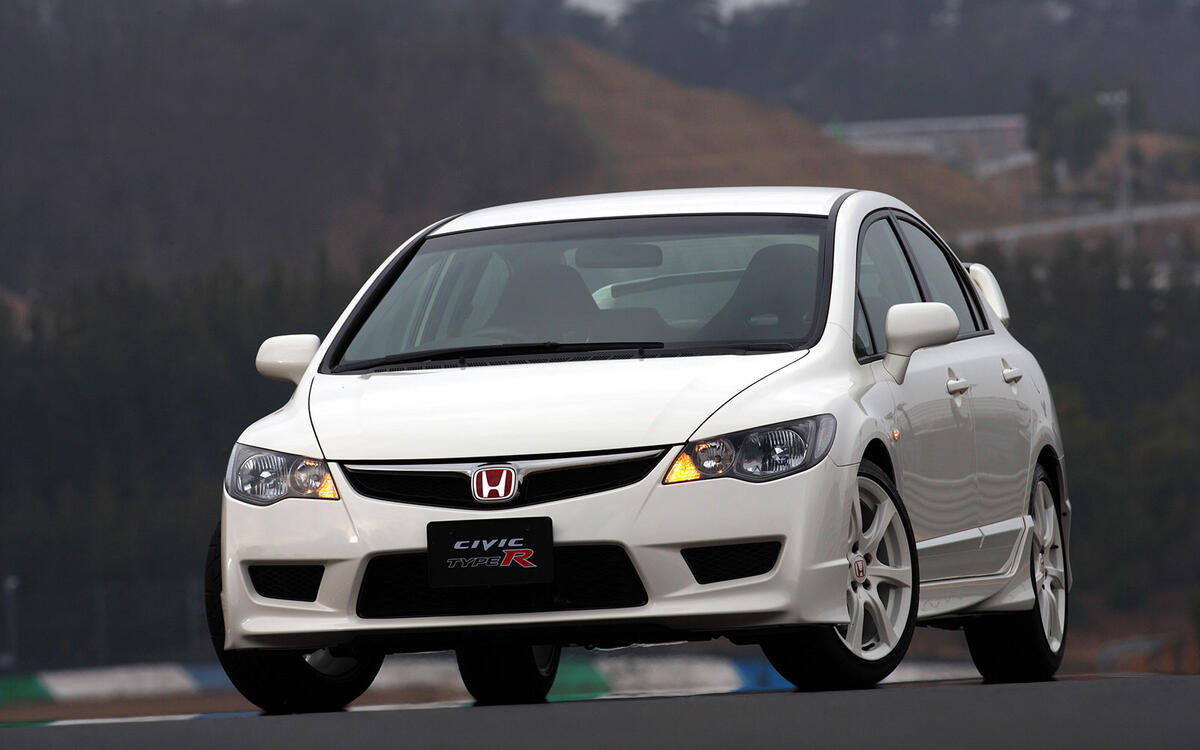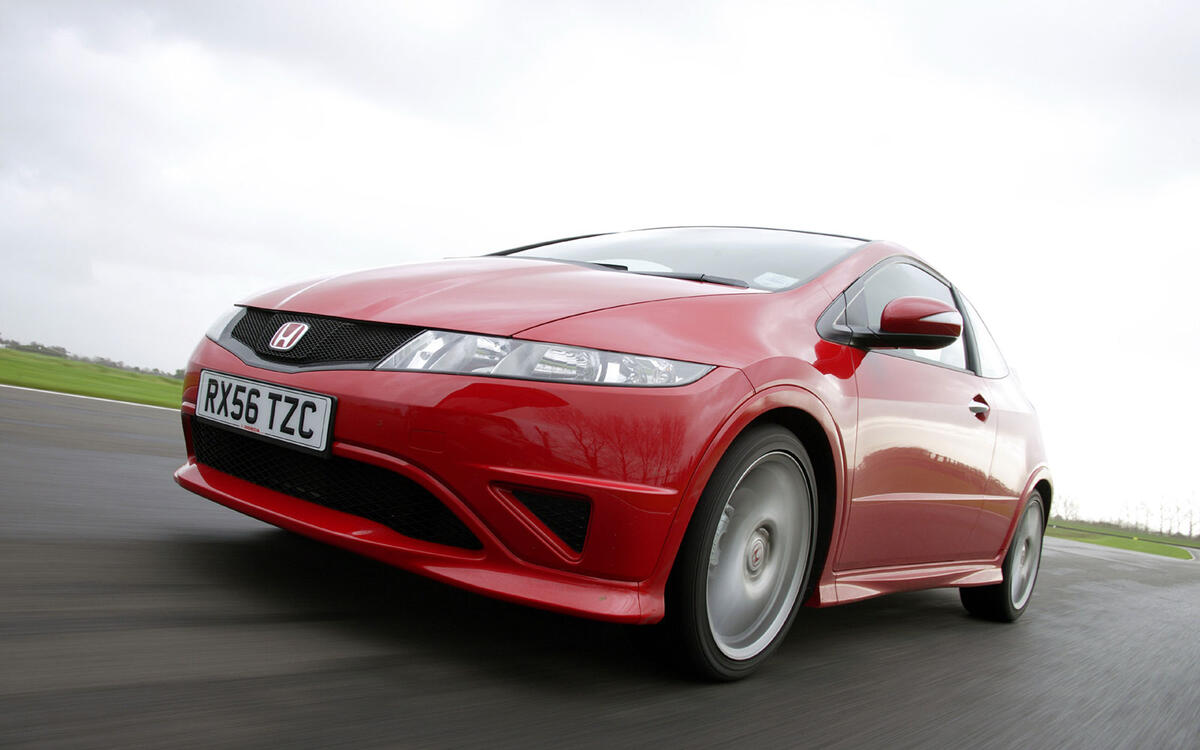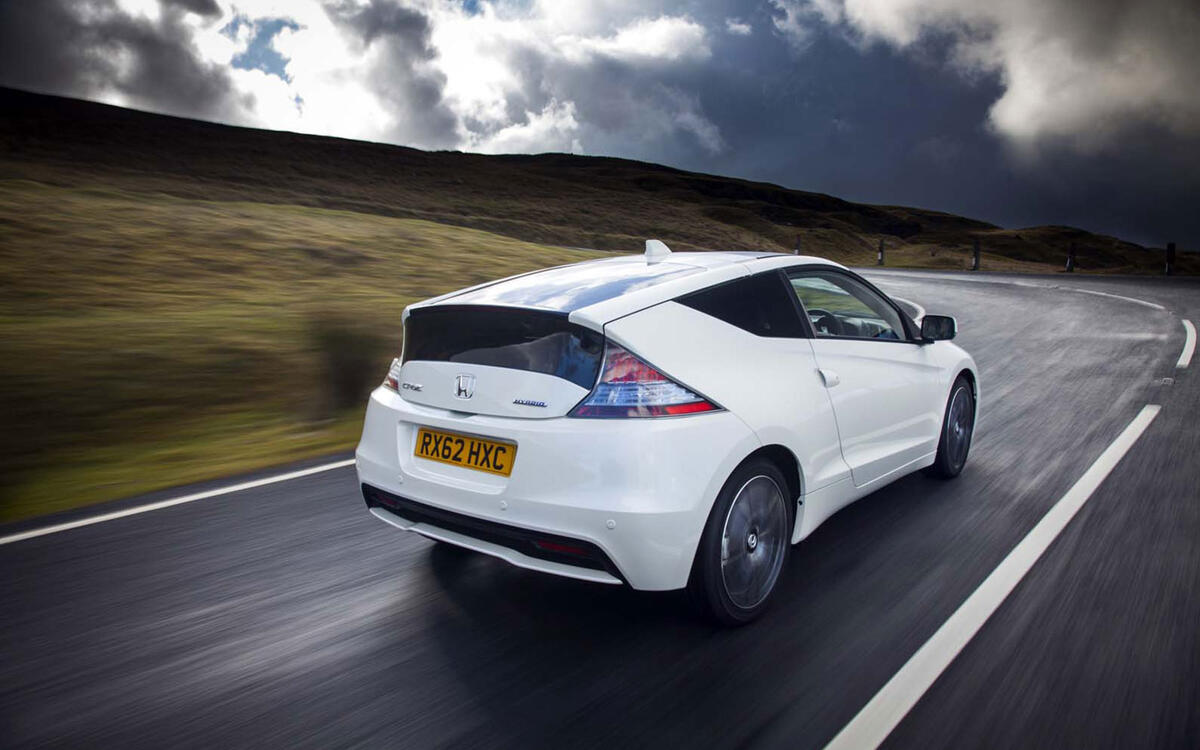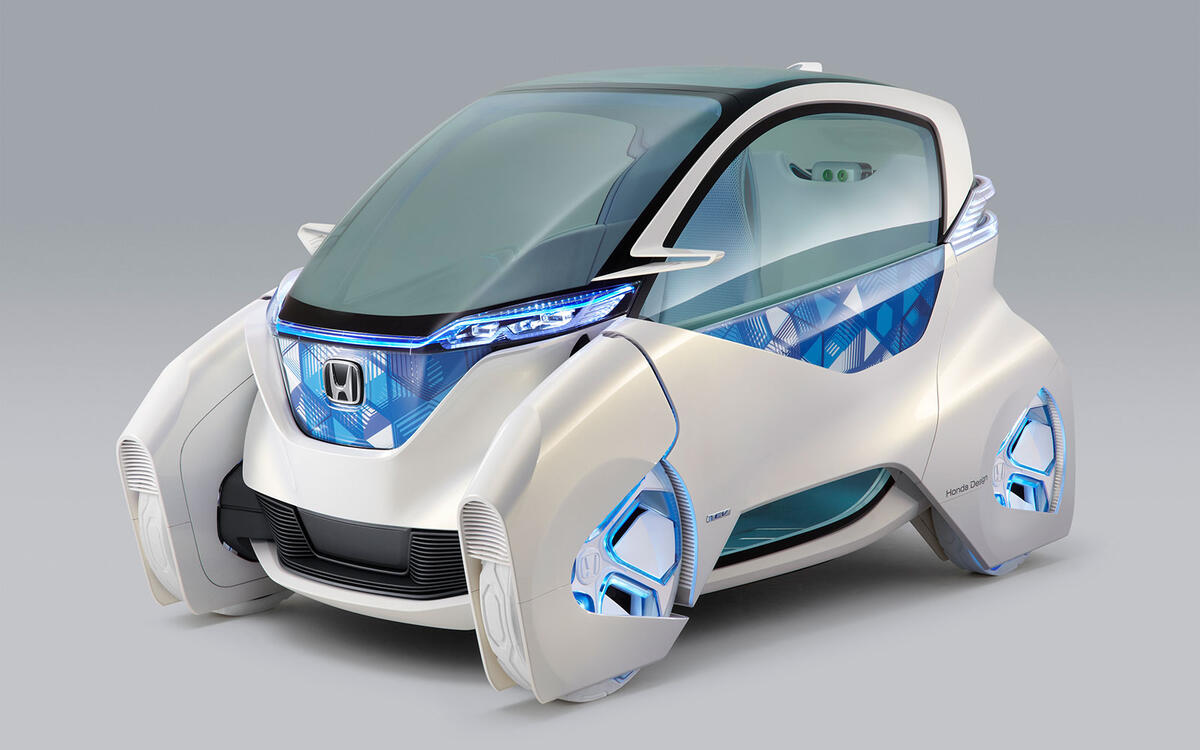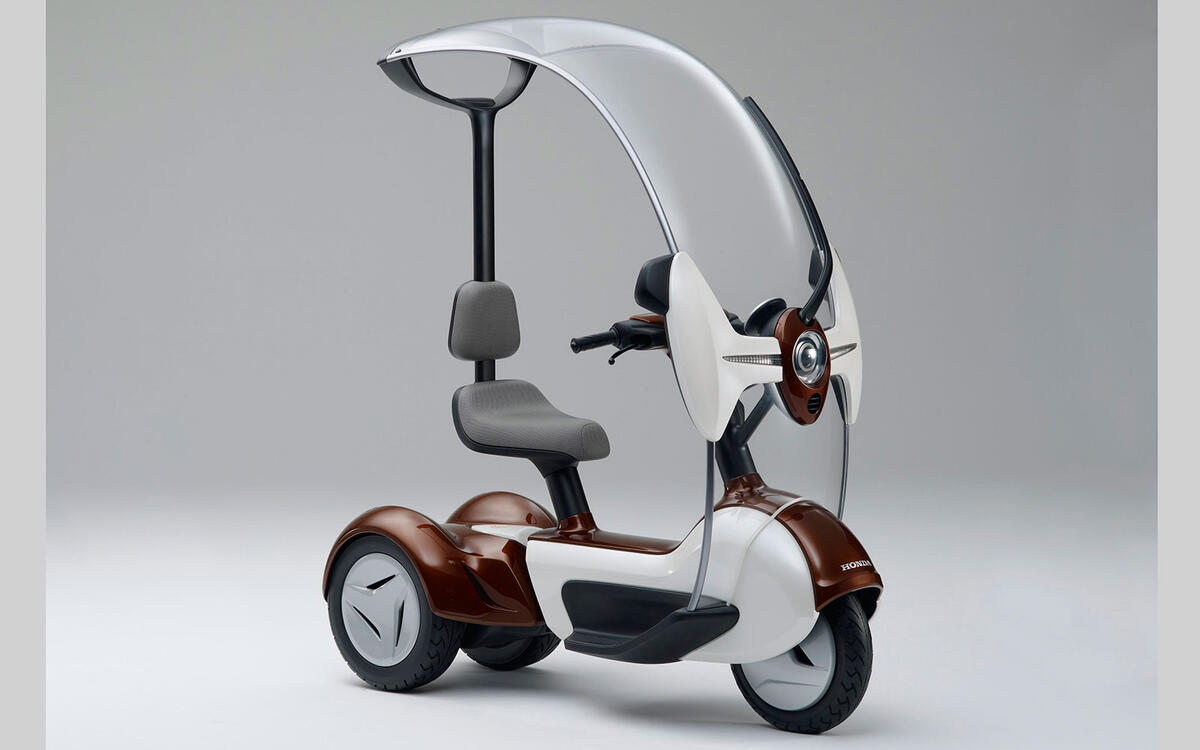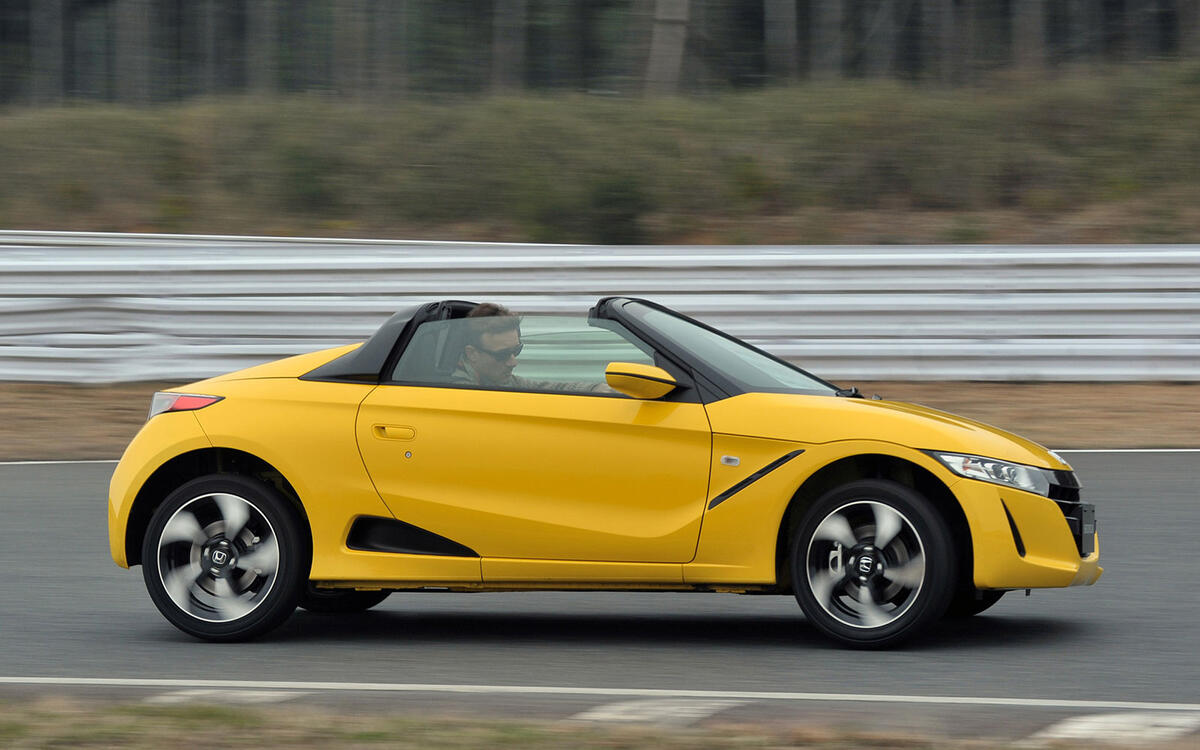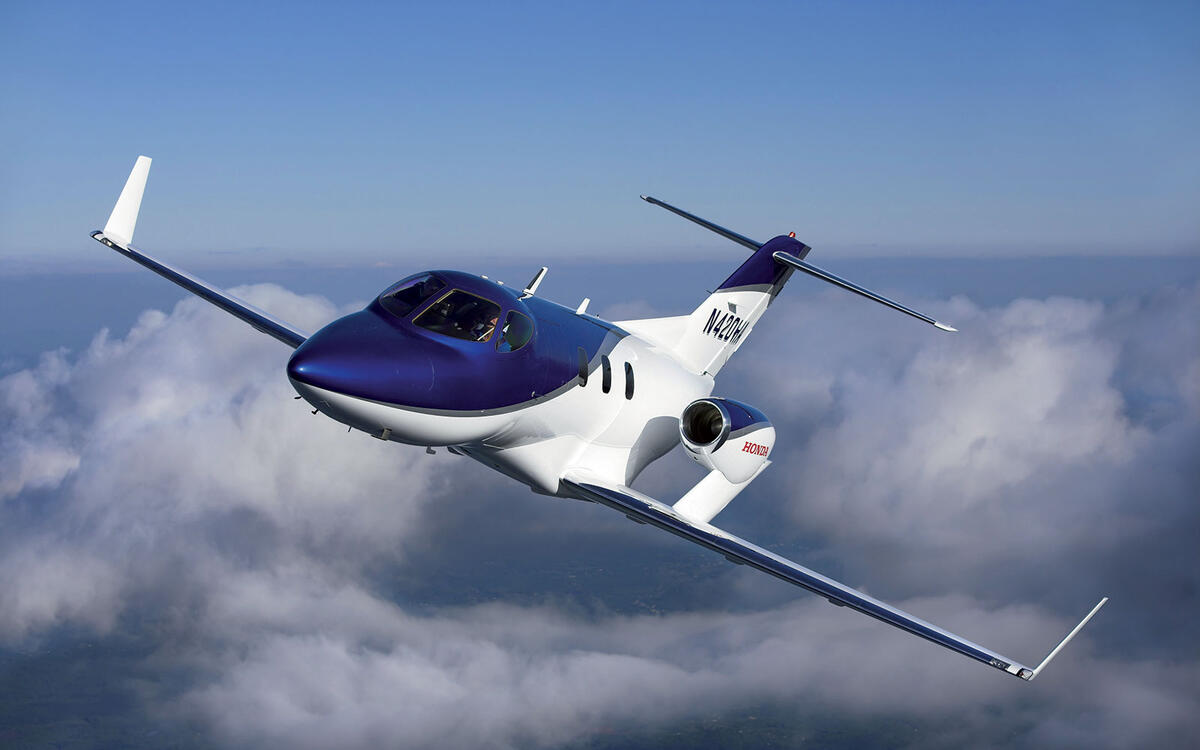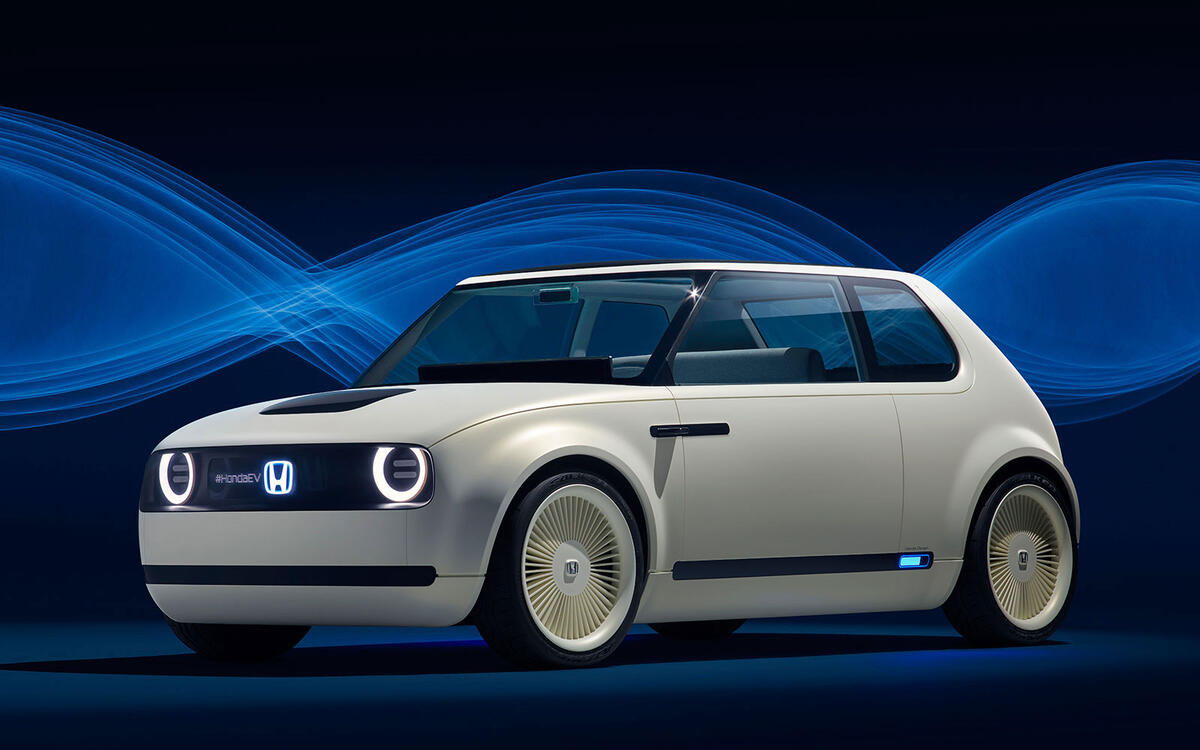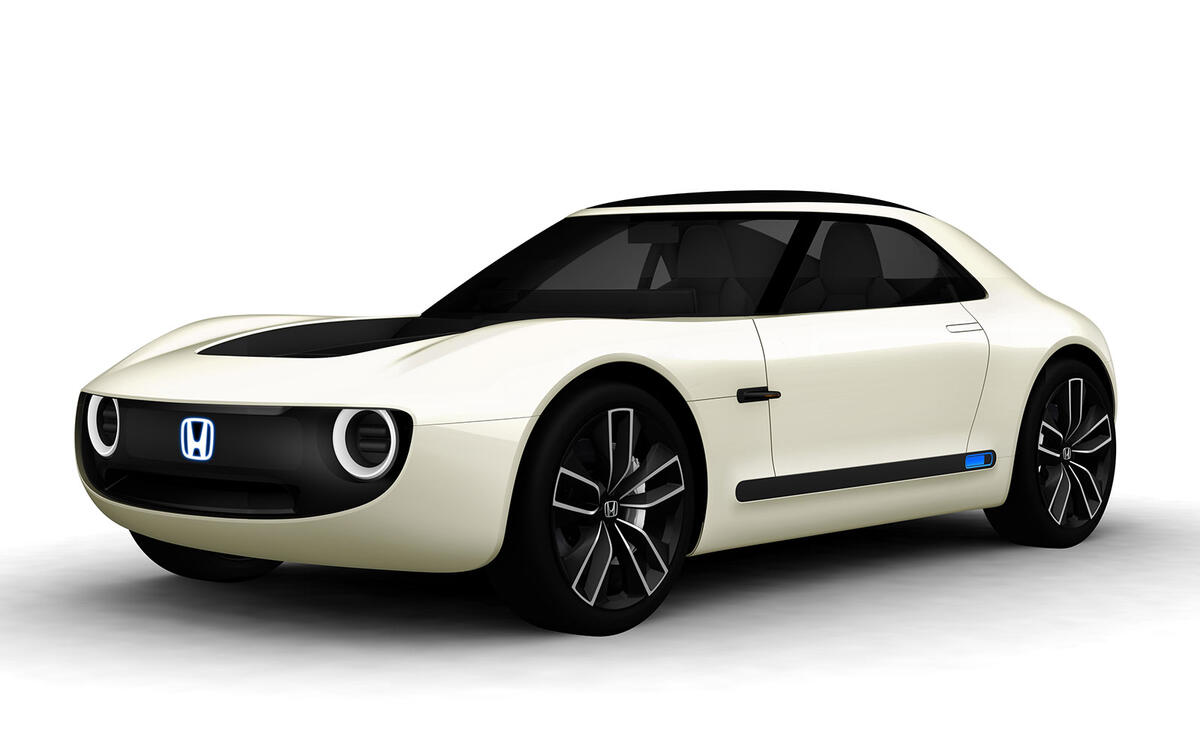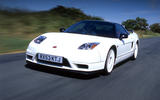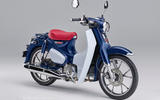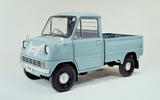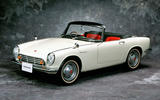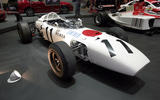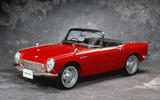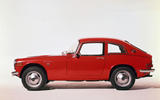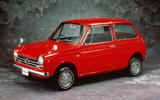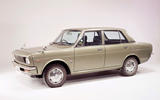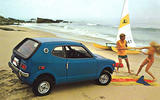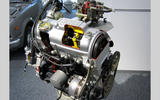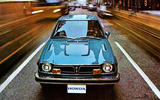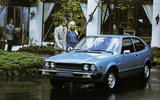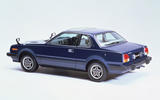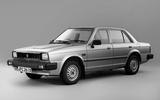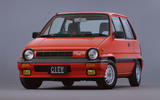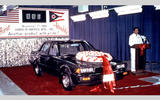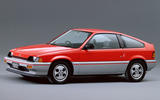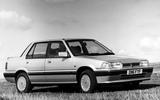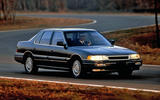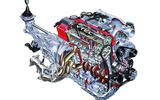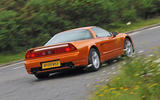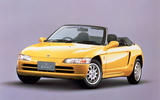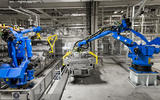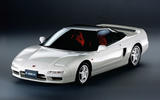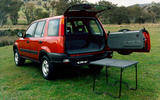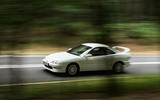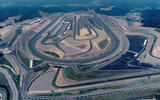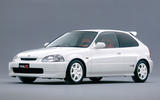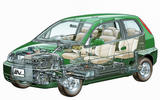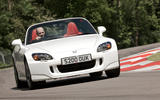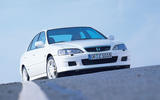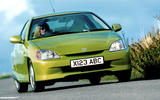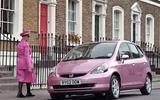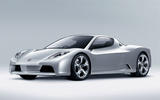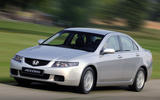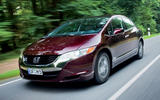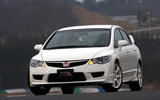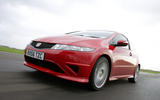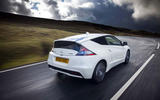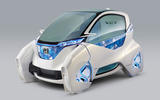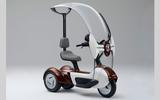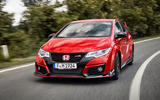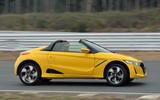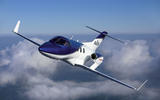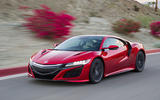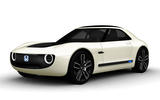 Slide of
Slide of
On 24 September 1948 the Honda Motor Company was born.
It had just 34 employees but within a year it would introduce a motorcycle called the Dream, created to provide cheap mobility. By 1955 Honda had become Japan's biggest motorcycle producer then in 1963 the company branched out into truck and car production.
Motorsport followed a year later and in time Honda would save Britain's only major car maker from oblivion (but only for a few years). Honda moved into agricultural machinery, outboard motors and aircraft and it would become the world's most prolific motorcycle maker. It's been a rather busy 70 years and these are only some of the highlights…
 Slide of
Slide of
Honda Super Cub (1958)
The Honda Super Cub is a simple, affordable motorcycle for the world. Bringing mobility to the masses, it’s the best-selling motorised transport ever with more than 100 million units sold worldwide so far. Yep – it's still in production and that's the 2019 model year bike pictured.
 Slide of
Slide of
T360 truck (1963)
Honda's first production four-wheeled vehicle was this marvellous tiny truck with a 356cc four-cylinder engine. Later would come a T500 with a throbbing 531cc engine capable of generating a monstrous 38bhp.
 Slide of
Slide of
Honda S500 (1963)
Making its debut alongside the T360 at the 1962 Tokyo motor show was the Honda S360. But this two-seater sports car never made production because from the outset it was fitted with the bigger 531cc engine of the T500 truck, tuned to give 44bhp. As such, the S500 was Honda's first production car, which made its debut four months after the T360.
 Slide of
Slide of
Formula One (1964)
Japan’s first Formula 1 car, the RA271, made its debut at the German Grand Prix. Honda took its first Formula 1 victory the following year, in the final round at Mexico.
 Slide of
Slide of
Honda S600 (1965)
Within a year of the S500 going on sale it had been upgraded with a bigger (606cc) engine and alongside the previous roadster there was a coupé option. More than 11,000 roadsters and almost 2000 coupés were built before production ended in 1966.
 Slide of
Slide of
Honda S800 (1966)
Like its forebear the S600, the S800 also came in coupé or roadster forms. Under the bonnet there was now a 791cc engine tuned to give 70bhp. That was enough to take the car all the way to the magic ton – making it the first car from Honda to be able to break the 100mph barrier.
 Slide of
Slide of
Honda N360 (1967)
The N360 city car, with its free-revving air-cooled four-stroke two-cylinder engine, kicked off Honda’s passenger car success story. These earliest cars complied with Japanese kei car regulations but the 598cc N600 that arrived in 1968 had an engine too large to comply – which didn't matter as it was introduced mainly for export markets. The N600 became the first Honda officially offered for sale in America, in 1969 for the 1970 model year.
 Slide of
Slide of
Honda H1300 (1969)
Proof that Honda doesn't always get it right. Its air-cooled 1300 saloon and coupé was a sales disaster thanks to a high price brought about by an elongated gestation period because of constant re-engineering. Honda learned its lessons though and stuck with water-cooled engines after this.
 Slide of
Slide of
Honda Z600 (1970)
Essentially a coupé version of the N600, the Z600 became a cult car among those in the know who loved its quirky design and tiny two-cylinder engine. The Z600 was the perkiest of the breed; in its home market the car was available in Z360 form with a 356cc powerplant.
 Slide of
Slide of
CVCC engine (1971)
Honda was the first manufacturer in the world to comply with the most stringent emission regulations at the time, the US Clean Air Act of 1970. It was through the introduction of the CVCC engine, (Compound Vortex Controlled Combustion) enabling the following year's Civic to comply with the Act without the need for a catalytic converter.
 Slide of
Slide of
Honda Civic (1972)
The compact, front-wheel drive Civic was a car perfect for the era into which it was born, with fuel shortages around the world; this was Honda's first model developed for a global market. The Civic won Japan's Car of the Year award in 1972, 1973 and again in 1974. The Civic has grown since 1972 but 10 generations and 24 million sales later, it's still going strong.
 Slide of
Slide of
Honda Accord (1975)
Honda’s first medium-sized car and its second world car was revealed in 1975: the Accord. Offered initially as a four-door saloon and three-door hatchback, the Accord is still in production for some markets, in tenth-generation form.
 Slide of
Slide of
Honda Prelude (1978)
Effectively an Accord coupé, the Prelude would survive for 23 years and five generations. Pitched squarely against the Toyota Celica, the Prelude was always more of a sporting mini-GT than an outright sports car, with all five generations featuring front-wheel drive.
 Slide of
Slide of
Gyrocator (1981)
Honda invented the world’s first map-based car navigation system. The Honda Electro Gyrocator was offered on Japanese-market Accords, more than a decade before GPS sat nav systems were introduced. Developed in conjunction with Alpine, there was no GPS; instead a series of sensors guessed the car's speed, direction and location to give instructions.
 Slide of
Slide of
Triumph Acclaim (1981)
The first fruit of Honda's agreement with Austin Rover was the Triumph Acclaim, a rebadged Ballade that went on sale with a 1.3-litre engine. It would be Triumph's last model before the brand was closed down in 1984. The (sadly unused) rights to build Triumph-badged cars today are owned by BMW.
 Slide of
Slide of
Honda City (1981)
Now generally forgotten the Honda City of 1981 was also sold in Europe as the Jazz. Production lasted until 1986 and in those five years of production Honda offered a sporty turbocharged edition along with a cabriolet.
 Slide of
Slide of
US car production (1982)
Honda began producing motorcycles in the USA in 1979. In 1982, it became the first Japanese brand to produce cars in the US. The Ohio factory was later joined by plants in Canada and Mexico.
 Slide of
Slide of
Honda CR-X (1983)
One of the most endearing and fun hot hatches of its day was the Civic-based three-door CR-X which is now largely forgotten – partly because most of them have either rusted away or been modded to oblivion.
 Slide of
Slide of
Rover 200 (1984)
Replacing the Triumph Acclaim was the first-generation Rover 200 which came in four-door saloon form only. Once again this was little more than a rebadged Honda Ballade – which is why it was so reliable.
 Slide of
Slide of
Acura Legend (1986)
The first Honda luxury car was launched, along with a new brand to sell it under – at least in the US. When the new Acura brand was launched it made Honda the first Japanese car company to launch a standalone premium division, beating Lexus and Infiniti by three years.
 Slide of
Slide of
F1 domination (1988)
Never before or since has anyone dominated an F1 season like this. The McLaren-Hondas won a record 15 out of 16 races, the team took the Constructors’ Championship, Ayrton Senna was 1988 F1 World Champion and his team-mate Alain Prost was runner-up.
 Slide of
Slide of
VTEC (1988)
Variable valve timing is a technology that would become the norm, but as with so many engineering innovations it was Honda that got there first. Its Variable Valve Timing and Lift Electronic Control (VTEC) system would revolutionise engine efficiency. A year later Honda introduced the world's first traction control system for front-wheel drive cars.
 Slide of
Slide of
NSX (1990)
The first production car to feature an all-aluminium monocoque, the NSX was tasked with beating Ferrari at its own game. While the Honda never sounded as good or as was involving to drive as its Italian adversary, it was better made, more reliable and more usable as a result. Production lasted all the way through to 2005, by which point the pop-up headlights had been swapped for faired-in items.
 Slide of
Slide of
Honda Beat (1991)
Honda's first sporting kei car was this brilliant box of fun; a two-seat mid-engined roadster with a naturally aspirated 656cc powerplant that developed 63bhp at a screaming 8100rpm. The last car to be approved by founder Soichiro Honda before he died in 1991, the Beat was developed for Japan only – but a few did escape to overseas markets.
 Slide of
Slide of
European production (1992)
In 1962 Honda opened its first overseas production facility in Aalst, Belgium, to build motorcycles. Thirty years later Honda opened two new car factories in Europe to make cars. The UK factory in Swindon initially built the Accord and a plant in Gebize, Turkey produced the Civic.
 Slide of
Slide of
The first Type R (1992)
Available only in its home market, the first Type R was a hard-core NSX with a naturally aspirated 276bhp 3.0-litre V6. Lighter than the regular NSX and fitted with recalibrated suspension, the original NSX-R was followed up by a sequel in 2002 – which once again was sold only in Japan. Both cars came only in white.
 Slide of
Slide of
Honda CR-V (1995)
The CR-V, or Compact Recreational Vehicle won instant acclaim and went on to become the world’s best-selling SUV with five generations offered so far. But only the original model was available with a shower in the boot or a removable load bay floor that doubled as a picnic table.
 Slide of
Slide of
Honda Integra Type R (1995)
Even more exciting than the CR-V was Honda's next Type R model, this significantly sharpened Integra. Lighter and more powerful than the regular model (the naturally aspirated 1.8-litre four-pot produced a slightly bonkers 197bhp at 8000rpm); this was a car initially available only in Japan. But in 1998 Honda brought some to the UK – and they promptly sold out immediately, leading to more cars being imported.
 Slide of
Slide of
Twin Ring Motegi (1997)
Honda doesn't do things by halves which is why in 1997 it built Japan’s first combined oval and road race circuits. Built for IndyCar racing, the 1.549-mile oval is unique in Japan. On the same site is a 2.98-mile road route, which is ideal for developing Honda's road cars – although anything sporting has to go to the Nurburgring for sign-off, so revered is the German track.
 Slide of
Slide of
Honda Civic EK9 Type R (1997)
The sixth-generation Civic wasn't the most exciting car in standard form but by the time this Type R edition arrived things were looking up. Not for anybody outside Japan though because yet again there were no exports. With a 1.6-litre four-pot in the nose, there was 183bhp on tap at a frenzied 8200rpm.
 Slide of
Slide of
EV Plus (1997)
Available for lease only, Honda introduced its first purely electric vehicle as long ago as 1997. The EV Plus was the world's first production electric car that wasn't powered by lead acid batteries; instead they were Nickel Metal Hydride (NiMH) items. Around 340 EV Pluses were made between 1997 and 1999.
 Slide of
Slide of
Honda S2000 (1998)
Honda decided to build itself a birthday present, to mark its first half-century – a rather special two-seat sports car. The high-revving S2000 brought the S500’s original roadster spirit right up to date.
 Slide of
Slide of
Honda Accord Type R (1998)
It's the forgotten Type R, which is rather a shame because this 215bhp 2.2-litre family car offers pace with practicality. More low-key than most Type Rs, this is one worth tracking down and keeping for the future – while everyone else clamours for a Civic.
 Slide of
Slide of
Honda Insight (2000)
Whereas the mainstream family hatch that arrived in 2009 was deeply unspecial, the original Insight was a landmark car. Lightweight and slippery this space-age two-seater featured a 1.0-litre three-cylinder engine boosted by an electric motor and was rated at just 80g/km of CO2. The original Insight was the first car to feature Honda's IMA (Integrated Motor Assist) hybrid tech; 17,000 examples were made.
 Slide of
Slide of
Asimo (2000)
Honda began developing humanoid robots in the 1980s, in a bid to produce a walking robot. The result was the first ASIMO (Advanced Step in Innovative MObility) which made its debut in 2000. ASIMO continued to be developed but in June 2018 Honda announced that the project was over, just before the robot celebrated its 18th birthday.
 Slide of
Slide of
Honda Civic EP3 Type R (2001)
Europe didn't get its first Civic Type R until 2001. Known as the EP3 generation, a 1.6-litre engine was fitted to all cars but for Honda's home market this was rated at 212bhp whereas in Europe we had to make do with just 200bhp. Not that this hot Civic ever felt underpowered.
 Slide of
Slide of
Honda Jazz (2002)
The clever Jazz supermini was launched way back in 2002; it was sold as the Fit in its home market. With a fuel tank in the middle it offered unheralded space efficiency while the ingenious rear Magic Seats ensured that Honda's smallest car was also one of its most versatile.
 Slide of
Slide of
Honda HSC concept (2002)
Even before the original NSX went out of production Honda was planning its replacement. This is what the second-generation NSX could have looked like; the HSC concept was supposed to give an insight into the all-new mid-engined supercar. In the event we wouldn't see the NSX Mk2 for another 15 years, by which point it looked a lot more appealing.
 Slide of
Slide of
Honda Accord diesel (2003)
The Honda ‘Cog’ TV advert became one of the most highly regarded advertising films ever. It was used to launch the all-new Accord which was offered with its all-aluminium i-CTDi engine – Honda’s first-ever in-house diesel which rewrote the rulebook on diesel powerplants.
 Slide of
Slide of
Honda FCX Clarity (2006)
Honda engineers had long dreamt of a hydrogen-powered future with its promise of no exhaust emissions and no need for recharging. The 2006 FCX Clarity was a landmark new car launch; it was the first commercially available hydrogen fuel cell car.
 Slide of
Slide of
Honda Civic FD2 Type R (2007)
Sometimes Japanese car makers offer completely different models for different markets. It's not unusual for Japan, the US and Europe to get different cars to satisfy local tastes and the eighth-generation Civic was an example of this. For the home market there was a 222bhp four-door saloon…
 Slide of
Slide of
Honda Civic FN2 Type R (2007)
…whereas European buyers got a five-door hatch with 197bhp. Both cars got a 2.0-litre engine and (for the first time in a Civic Type R) a six-speed manual gearbox, and as with the previous model there was a helical limited-slip diff to help get the power down.
 Slide of
Slide of
Honda CR-Z (2011)
By 2011 Honda was on a mission to demonstrate its environmental credentials at every opportunity and while Toyota had become synonymous with petrol/electric hybrid technology, Honda was keen to compete. The CR-Z was effectively a modern-day CR-X but with hybrid power but while it looked neat and was fun to drive it didn't catch on.
 Slide of
Slide of
Honda Micro Commuter concept (2011)
We haven't had the space to include many of Honda's concepts here but over the years it has come up with a raft of innovative and/or bonkers creations. This one has a foot in both camps and we love its neat design – and its engineering too. Powered by a rear-mounted motor, the Micro Commuter had a 15kWh lithium-ion battery to give a 37-mile range and a top speed of 50mph.
 Slide of
Slide of
Honda E-Canopy (2011)
Another concept that was first seen in 2011 was the brilliantly neat E-Canopy three-wheeled motorbike. The Japan-only Canopy is one of the country's most popular commuter vehicles so creating an electric version was an obvious move.
 Slide of
Slide of
Honda Civic FK2 Type R (2012)
Whereas previous Civic Type Rs had been plenty fast enough with around 200bhp, the bar was raised massively with the fourth edition. By the time this 306bhp monster arrived the market expected this level of power. This time there was a standard model for the Japanese and European markets – a five-door hatchback with pumped-up wheelarches and a set of not-very-subtle spoilers.
 Slide of
Slide of
Honda S660 (2015)
Taking over where the Honda Beat left off, the S660 is another kei car that we first saw in concept form in 2013. By 2015 the car had reached production, powered by a mid-mounted 660cc three-cylinder engine driving the rear wheels via a six-speed manual or seven-speed automatic transmission.
 Slide of
Slide of
HondaJet (2015)
Soichiro Honda’s ultimate dream was realised in 2015 when the first production HondaJet took to the skies. The six-passenger executive jet boasts a range of over 1375 miles and, with a top speed of 489mph, is the fastest Honda ever built. At US$4.9 million (£3.8m) each, it's probably the most expensive too, though as private jets go, it's a bargain.
 Slide of
Slide of
Honda NSX (2017)
The original NSX went out of production in 2005 and it seemed that its successor was perpetually just around the corner. In the end we waited more than a decade for the second-generation NSX and it was worth waiting for with its twin-turbo 3.5-litre V6 engine backed up by no fewer than three electric motors.
 Slide of
Slide of
Honda Urban EV concept (2017)
Honda got more than its fair share of attention with the Urban EV concept when it was revealed at the 2017 Frankfurt motor show. And quite right too, as this compact city car featured some of the freshest design in years. Even better, Honda claims a production version is set to arrive in 2019, and it won't be changed too much from the show car. Here's hoping.
 Slide of
Slide of
Honda Sports EV concept (2017)
A month after the Urban EV concept was first shown this sequel was revealed at the Tokyo motor show. Looking just as appealing but aimed at a different market, as with the Urban EV the Sports EV was a compact pure-electric car. and just like the Urban EV, the Sports EV will hopefully go into production.
Celebrating seven decades of one of the world's most forward-thinking companies
Advertisement

